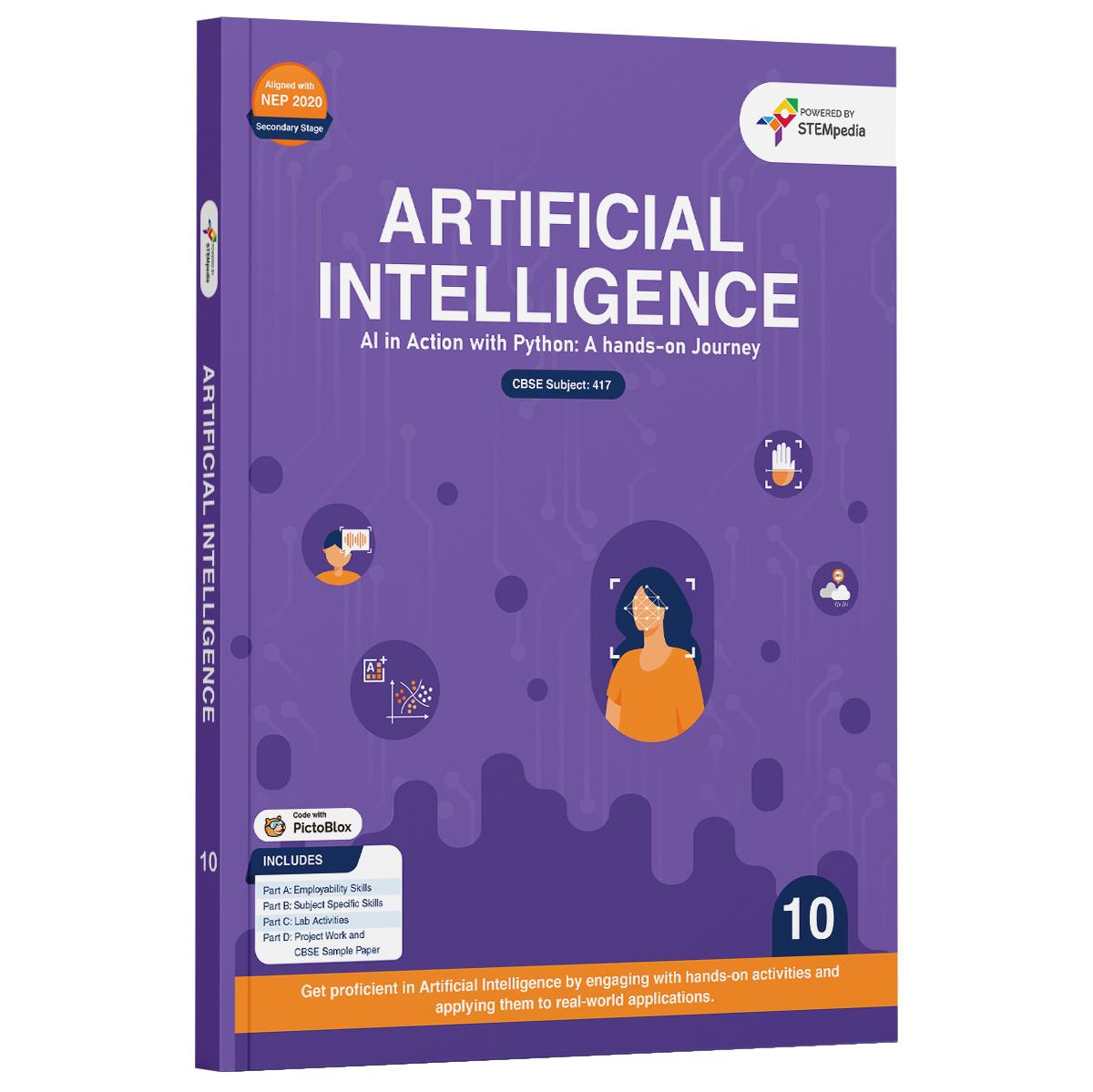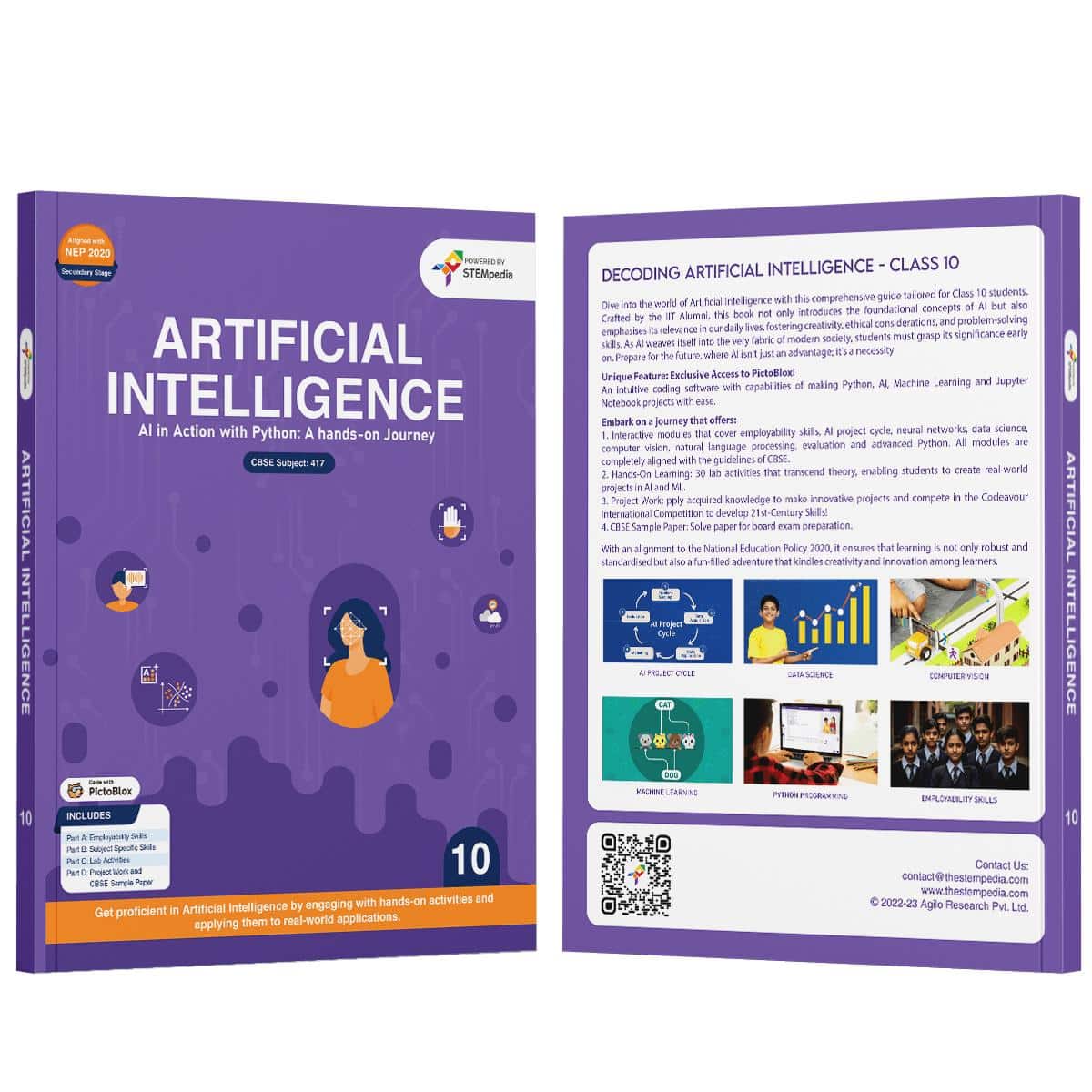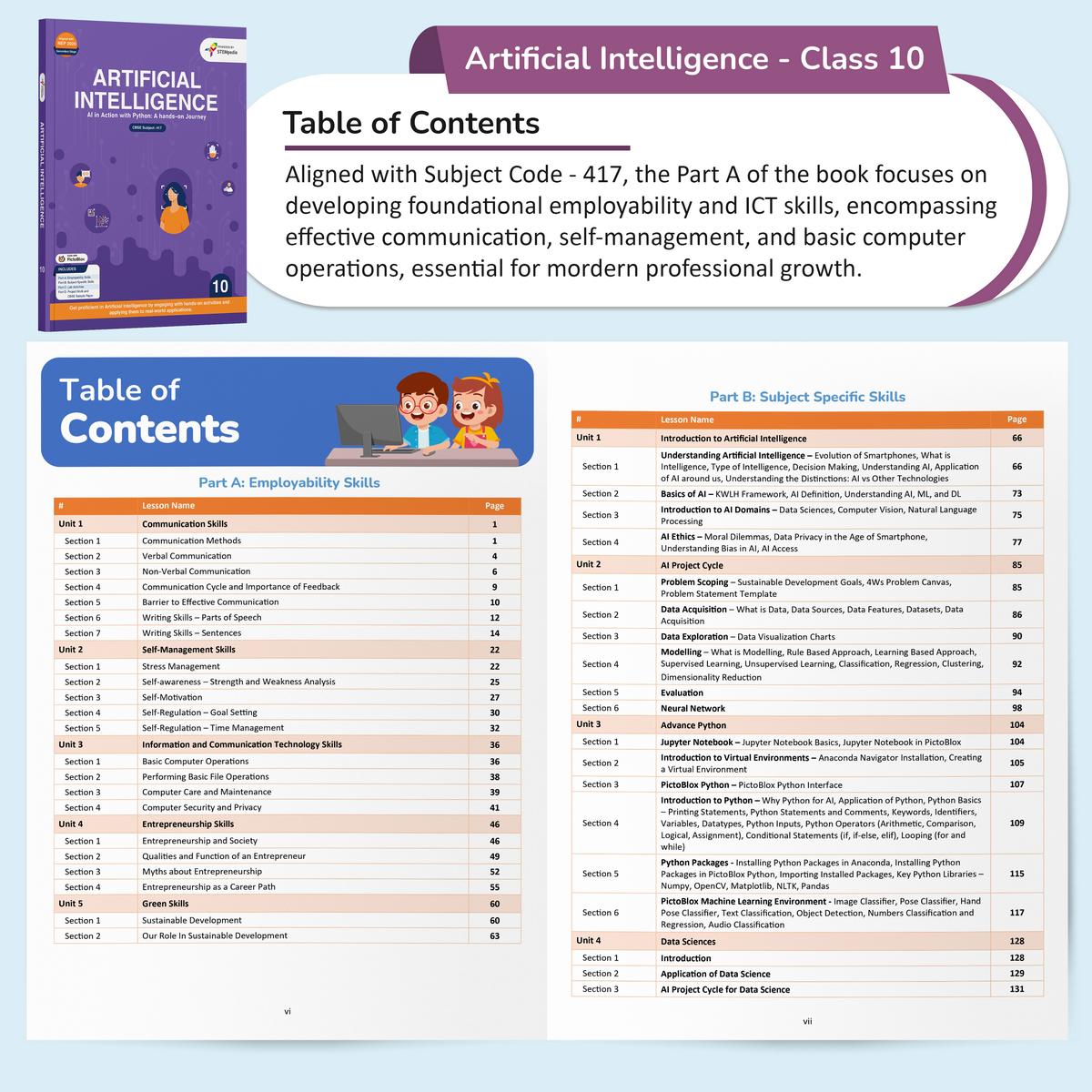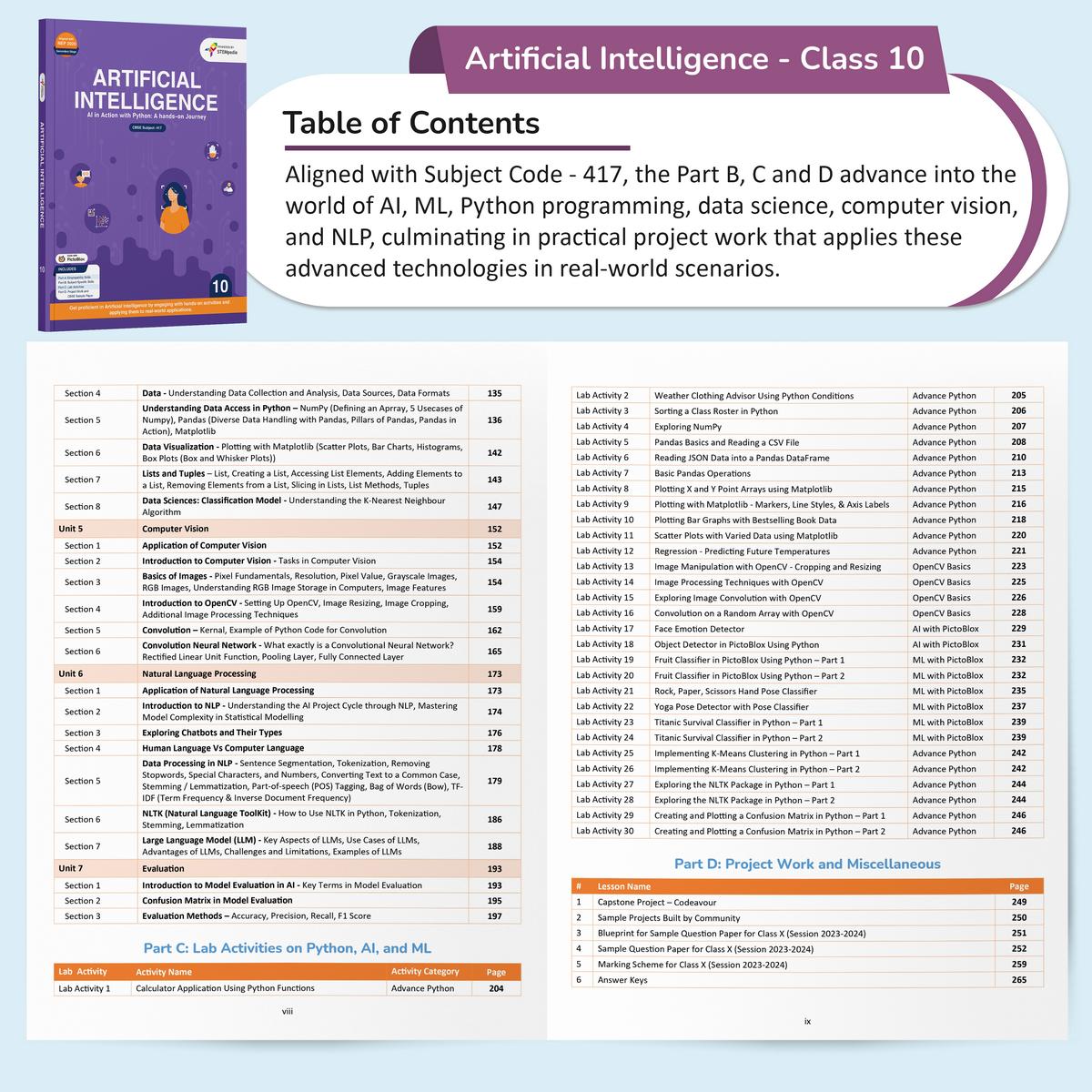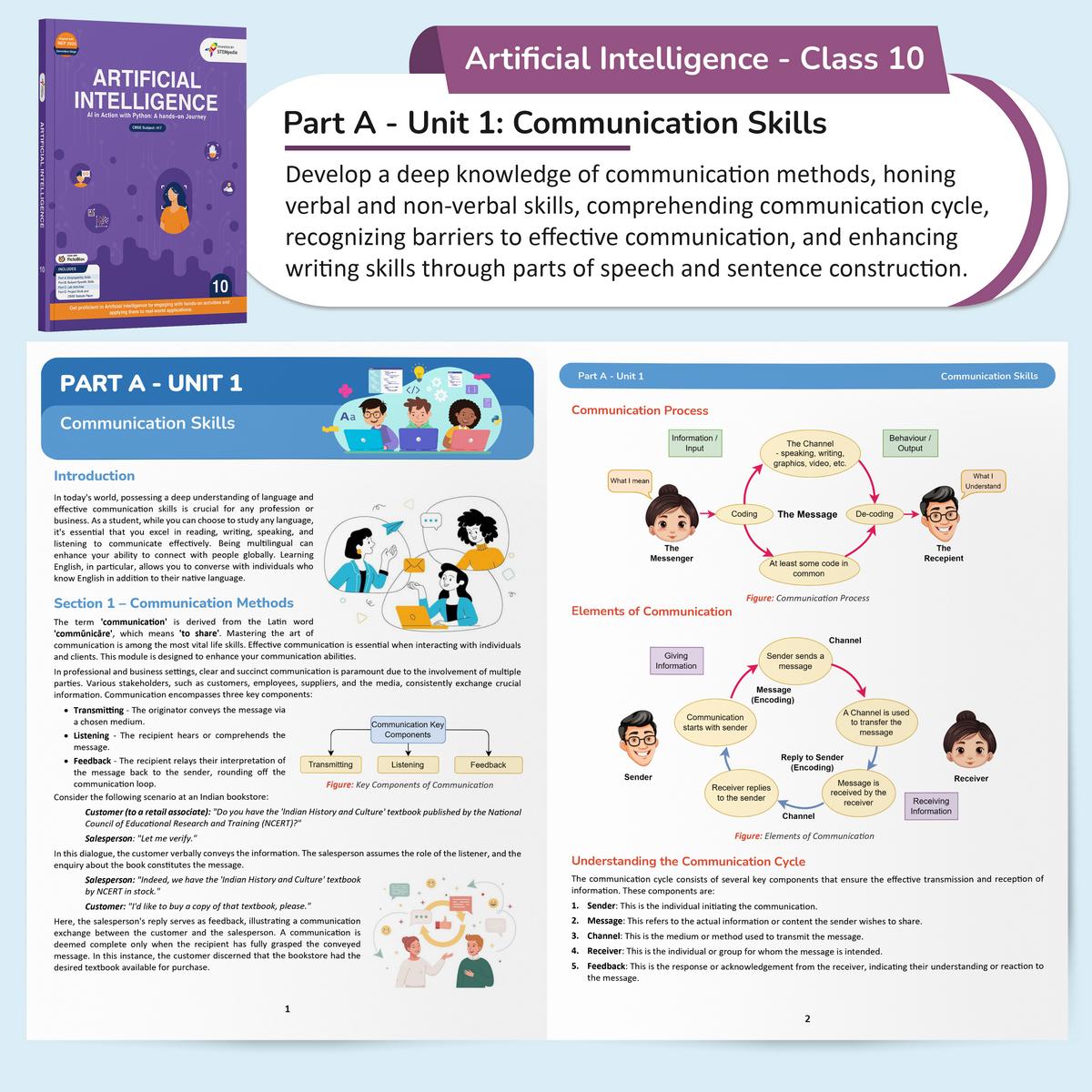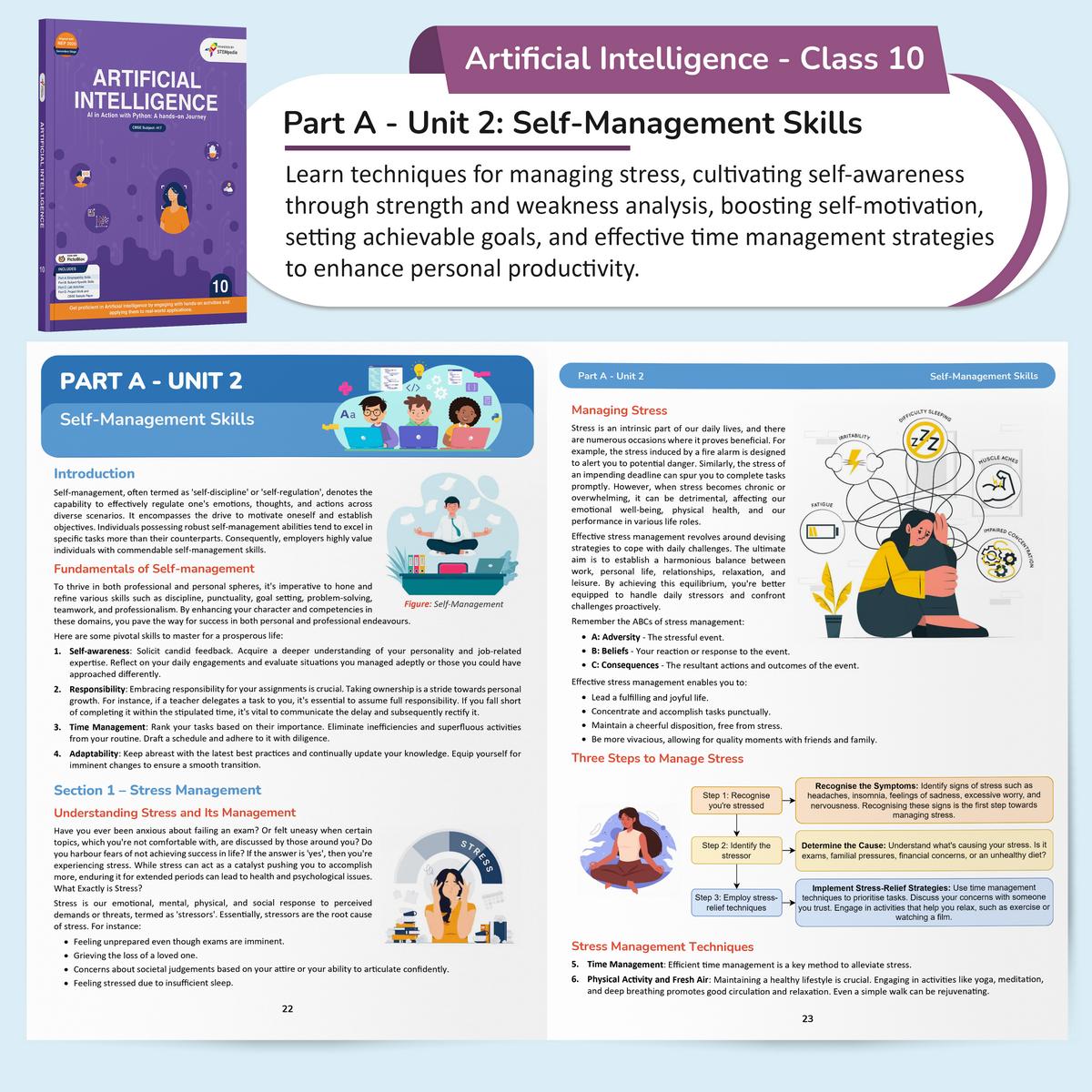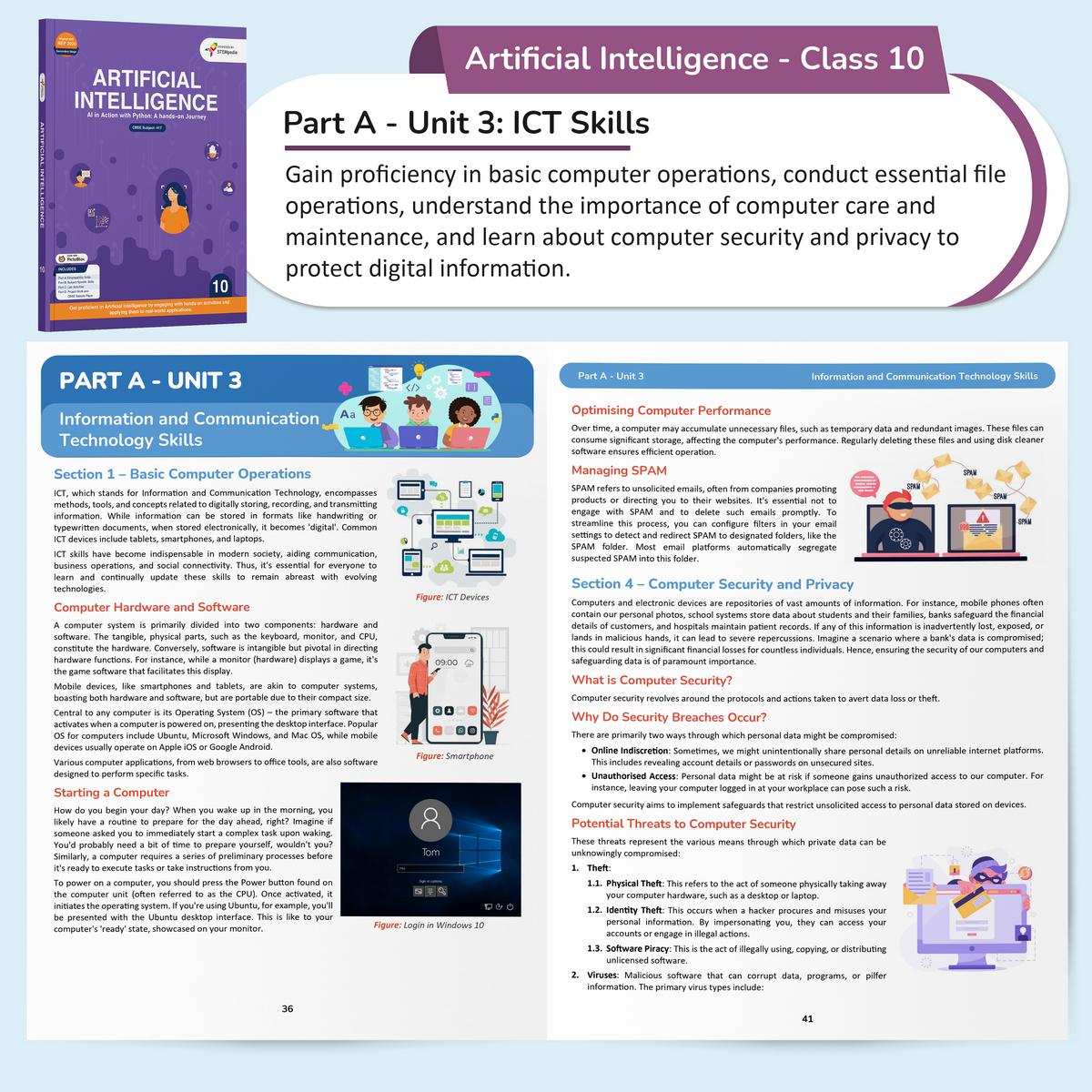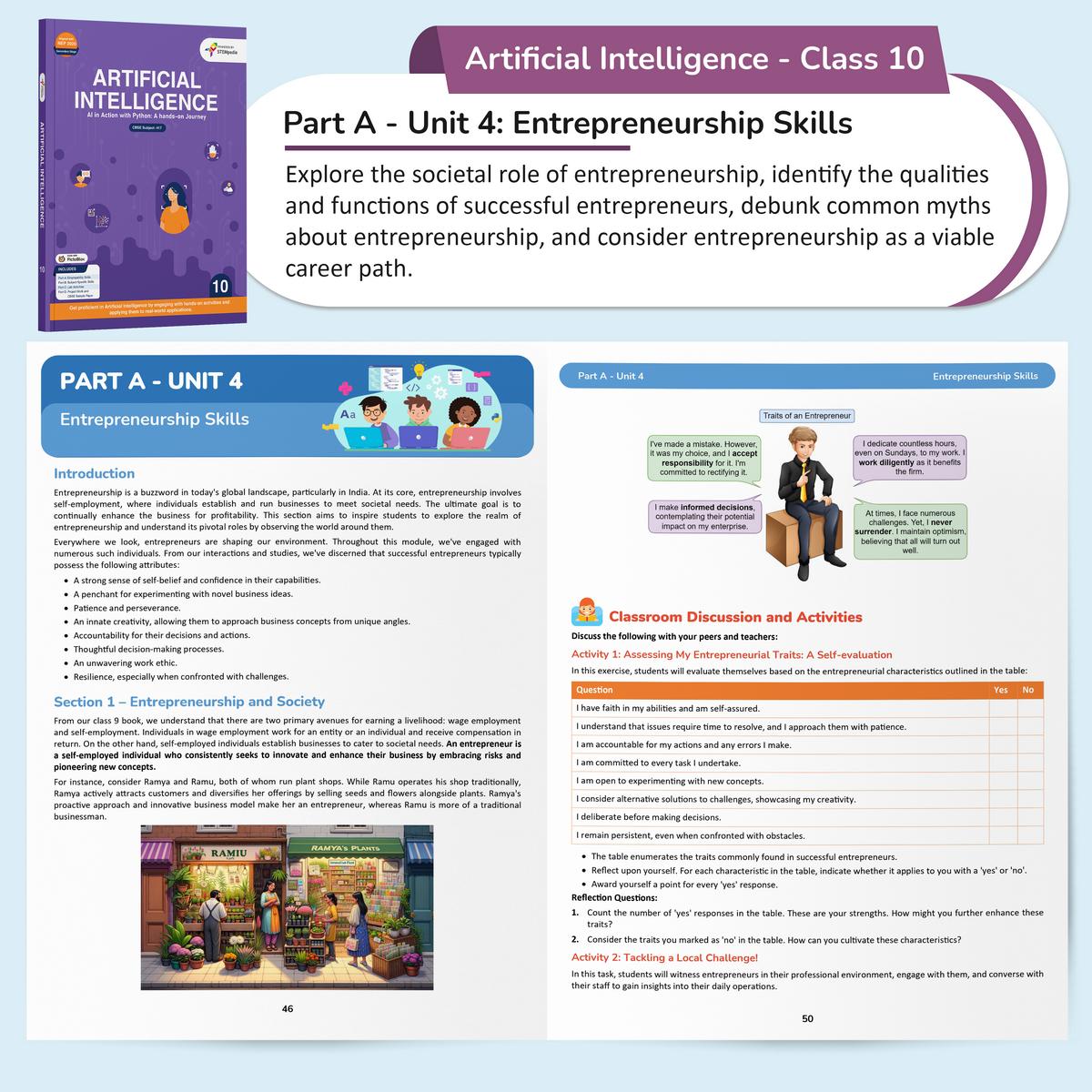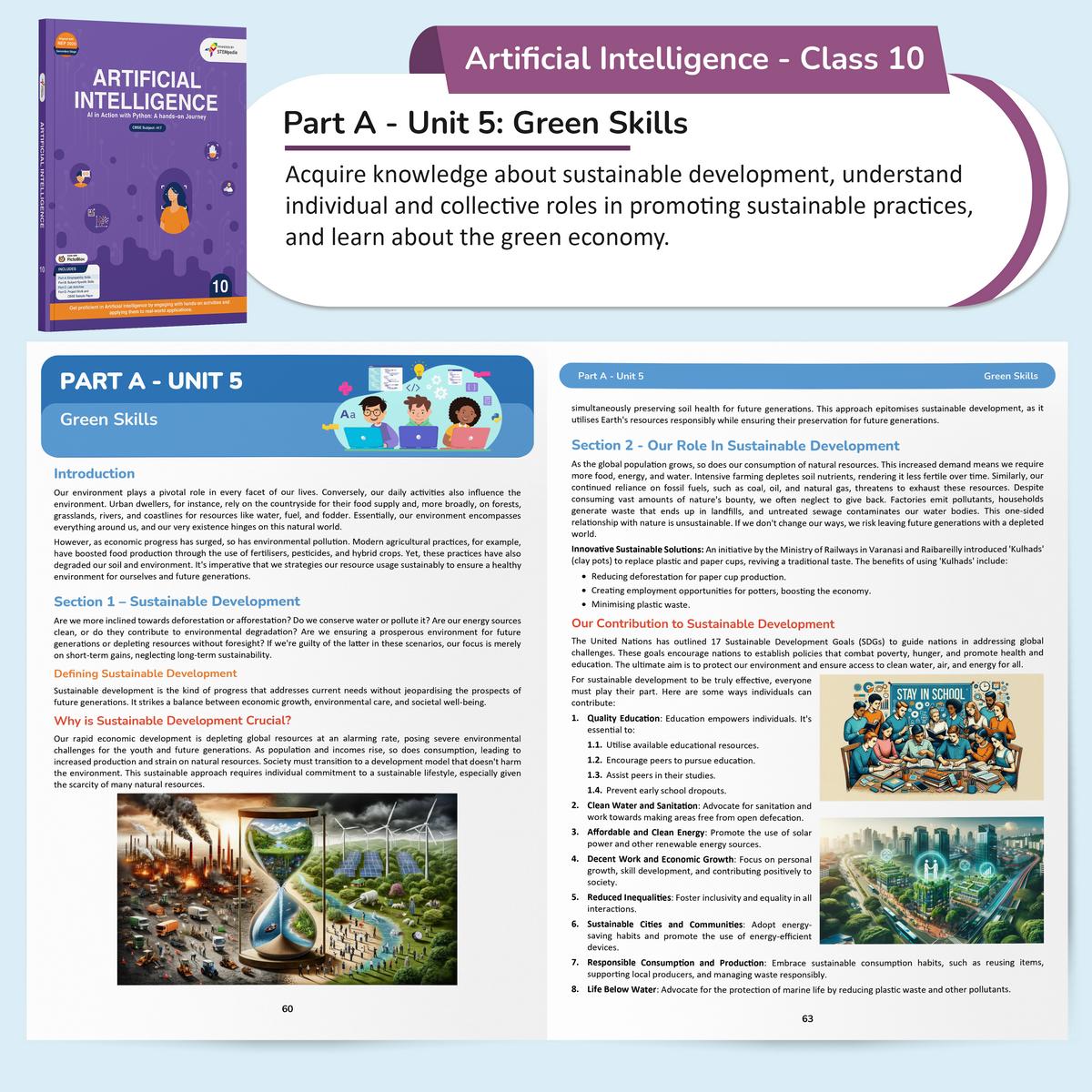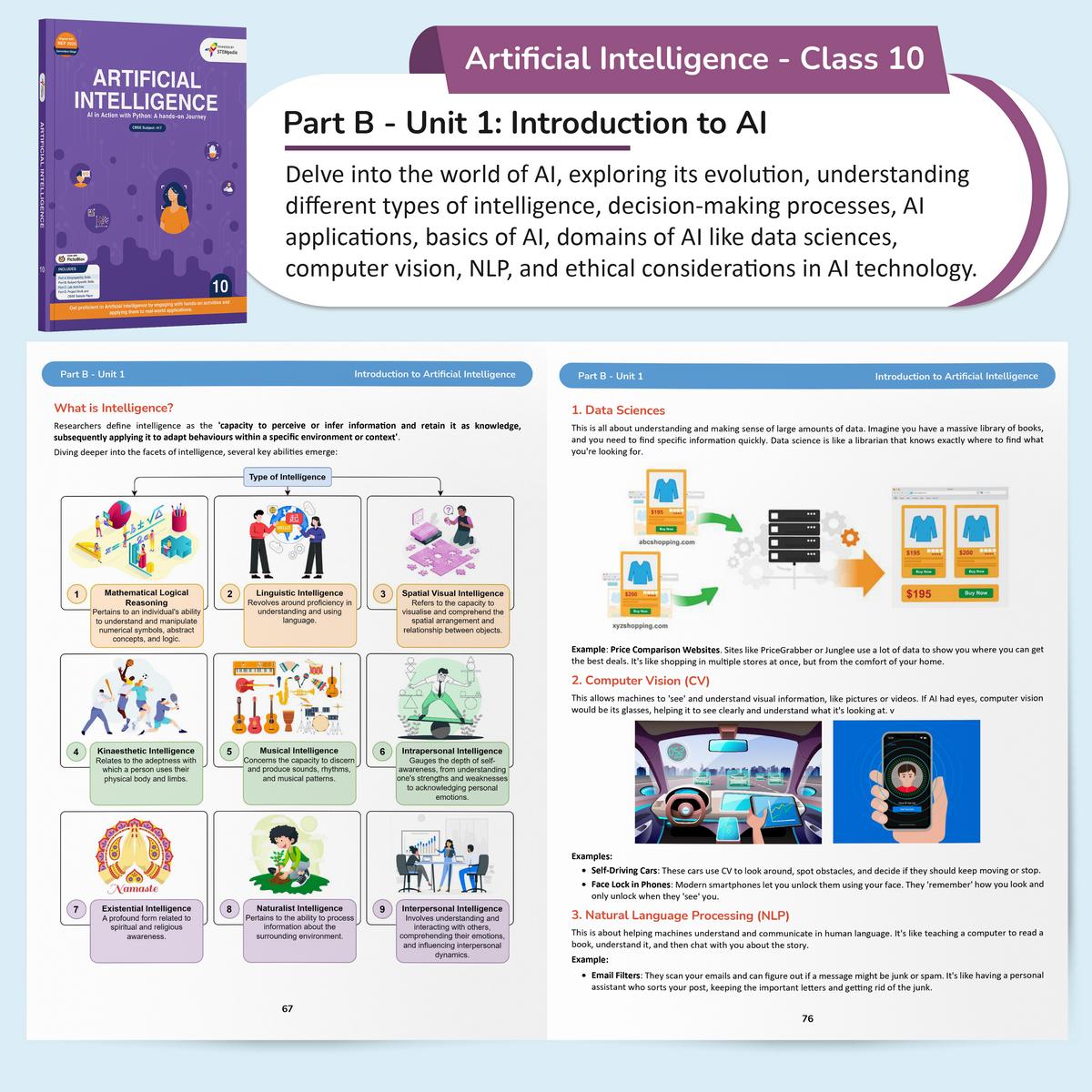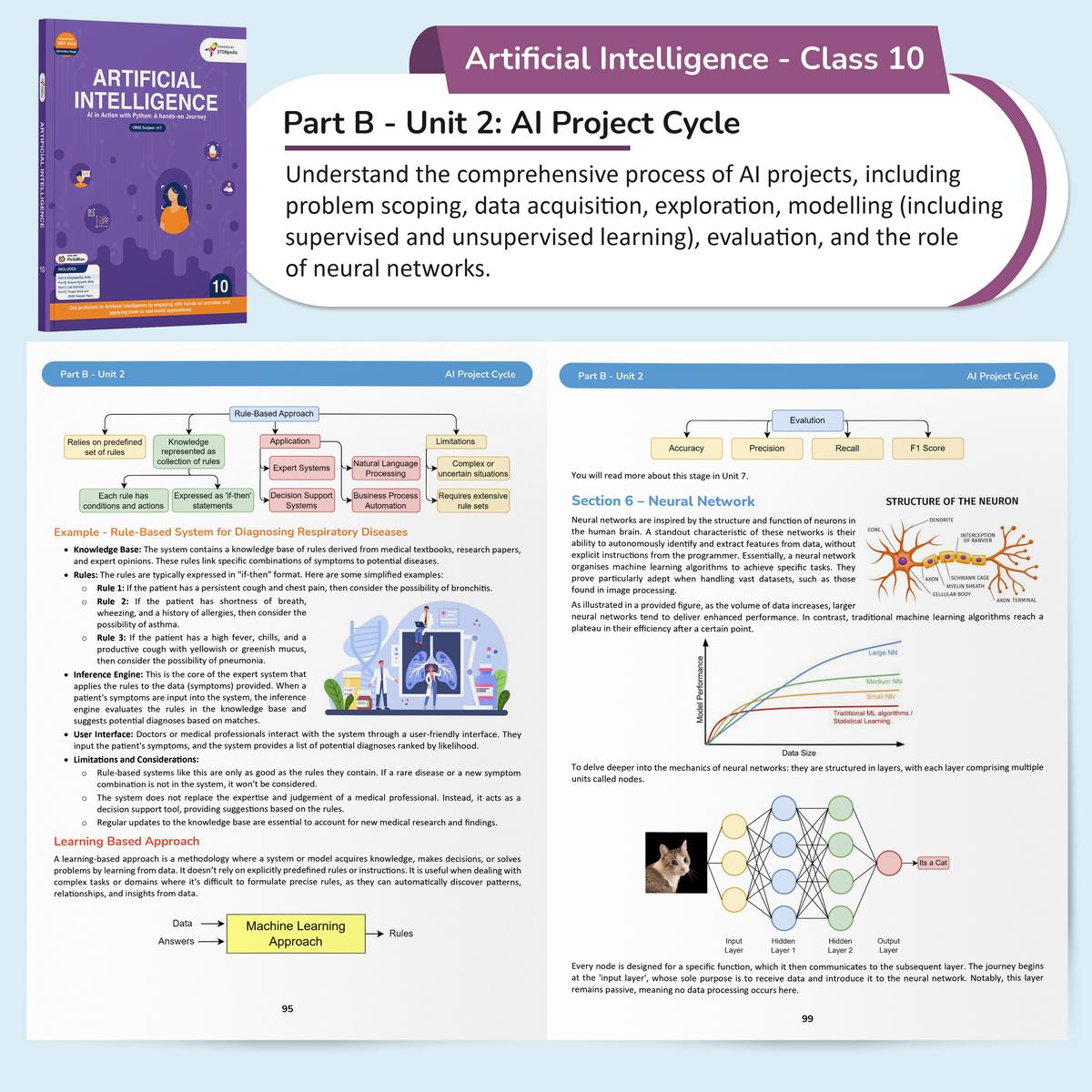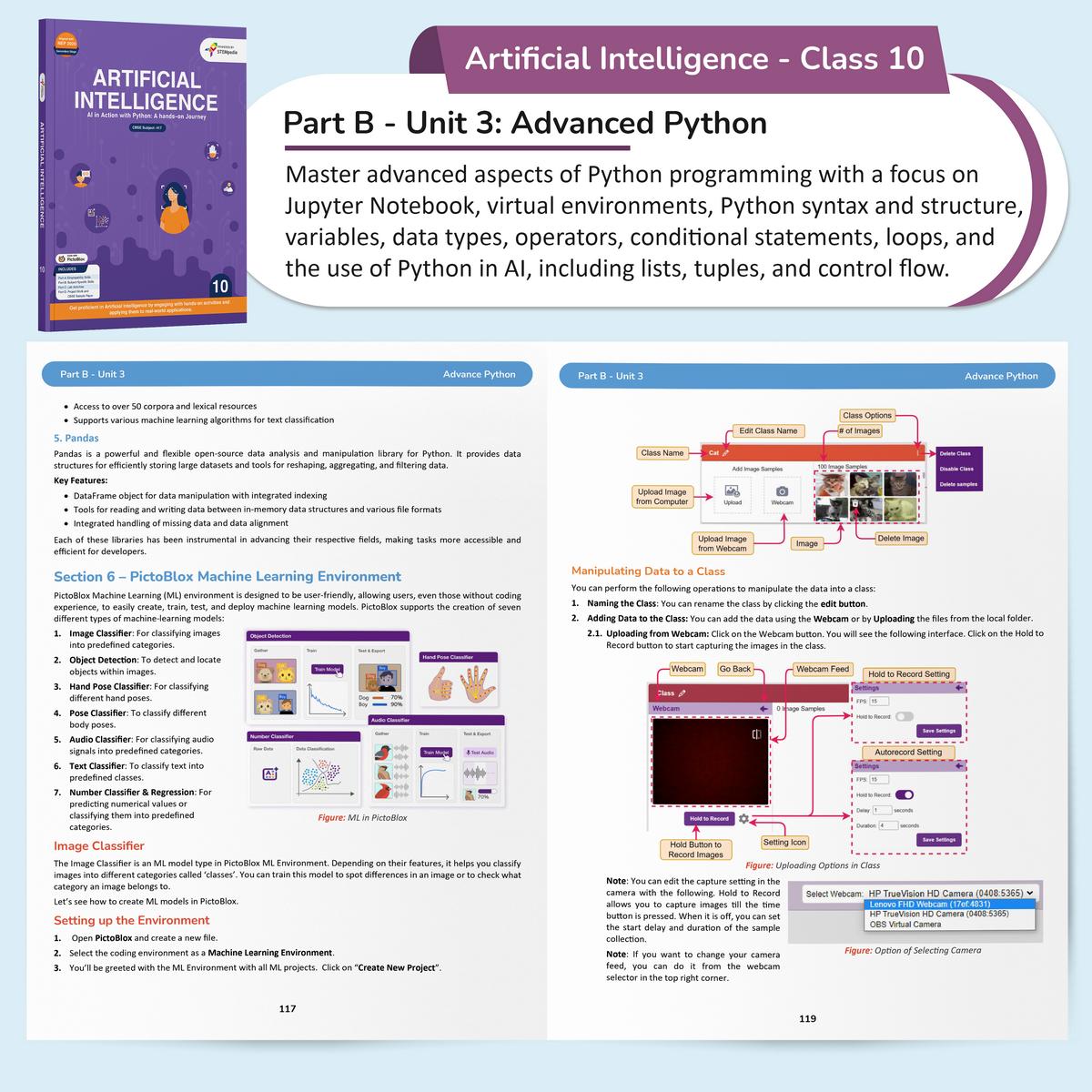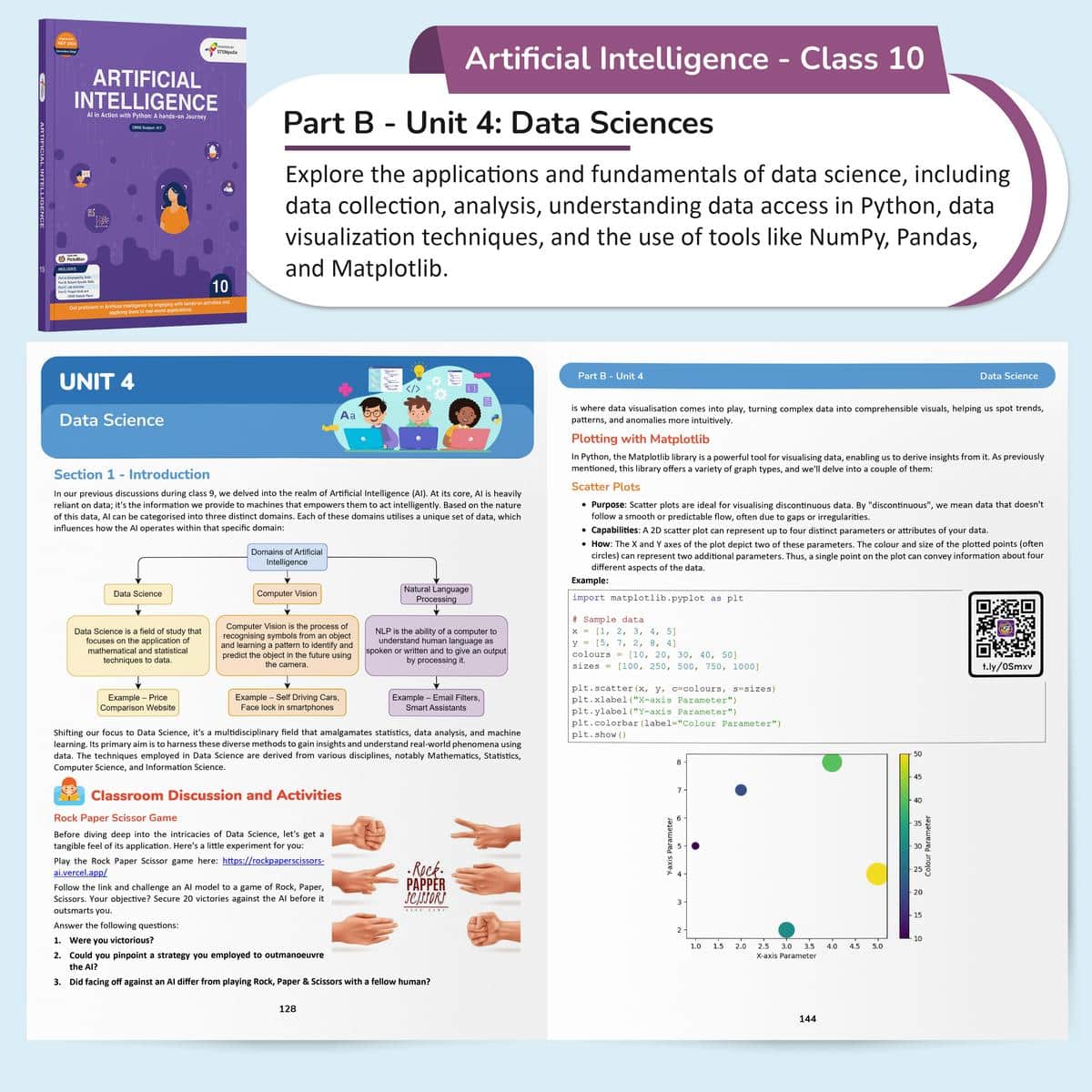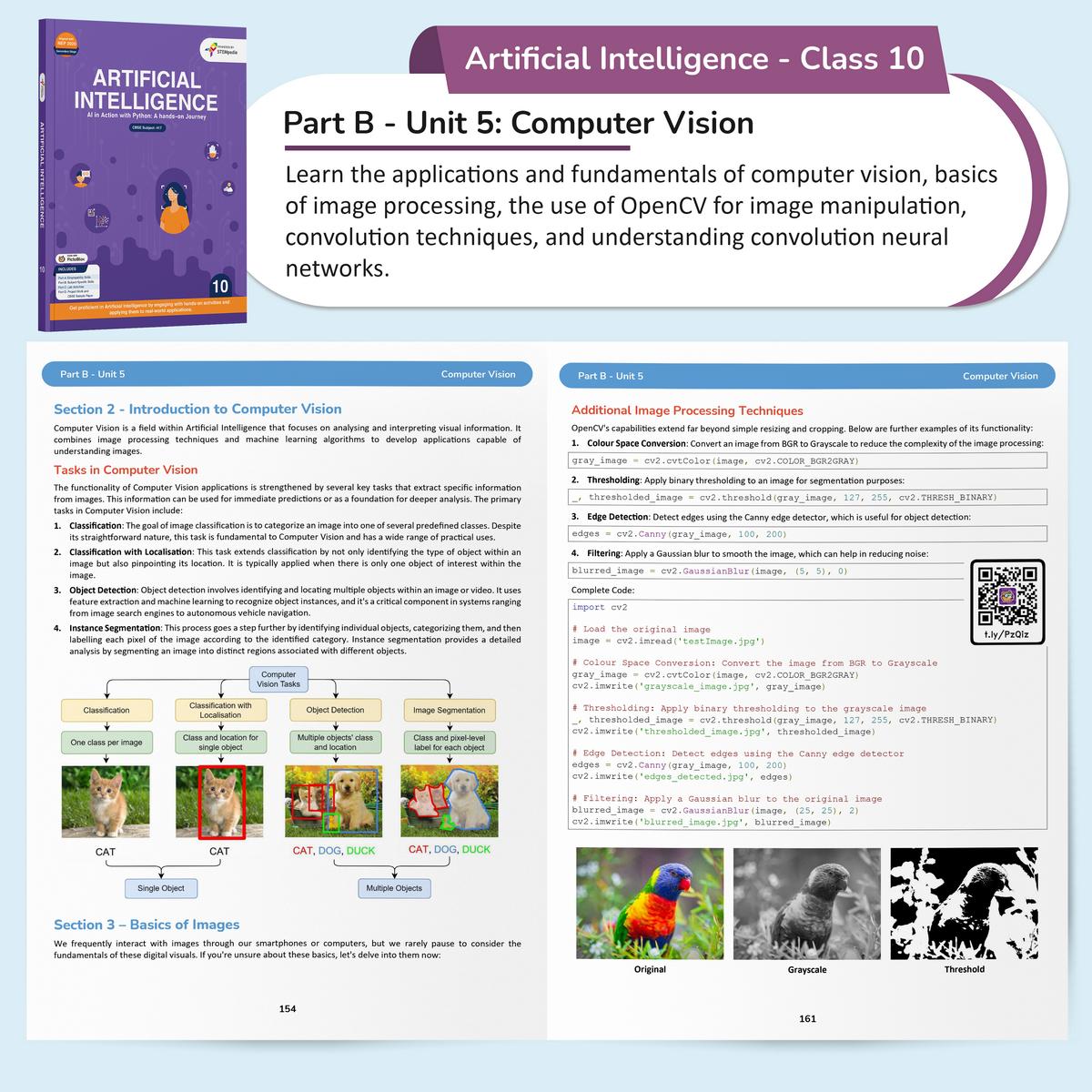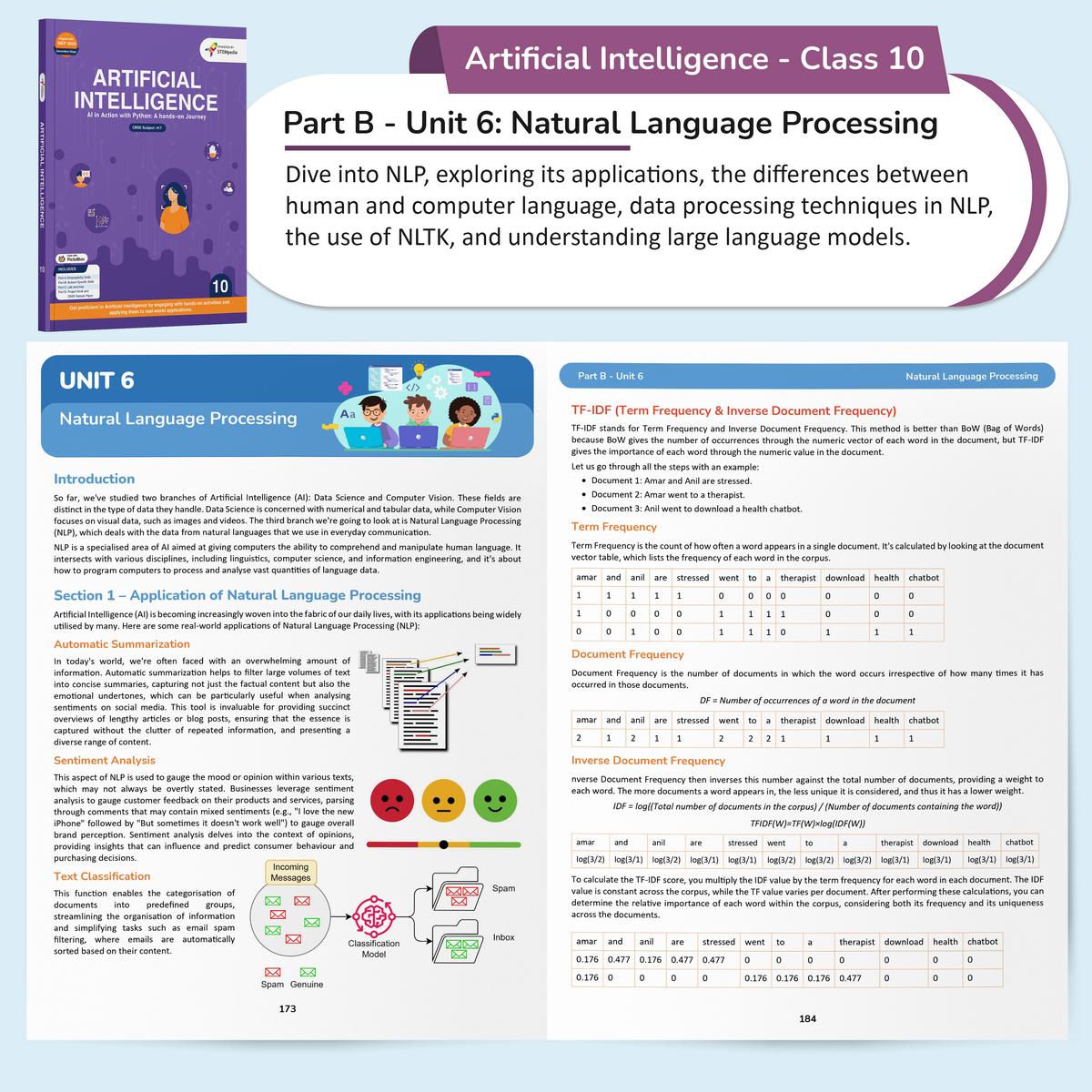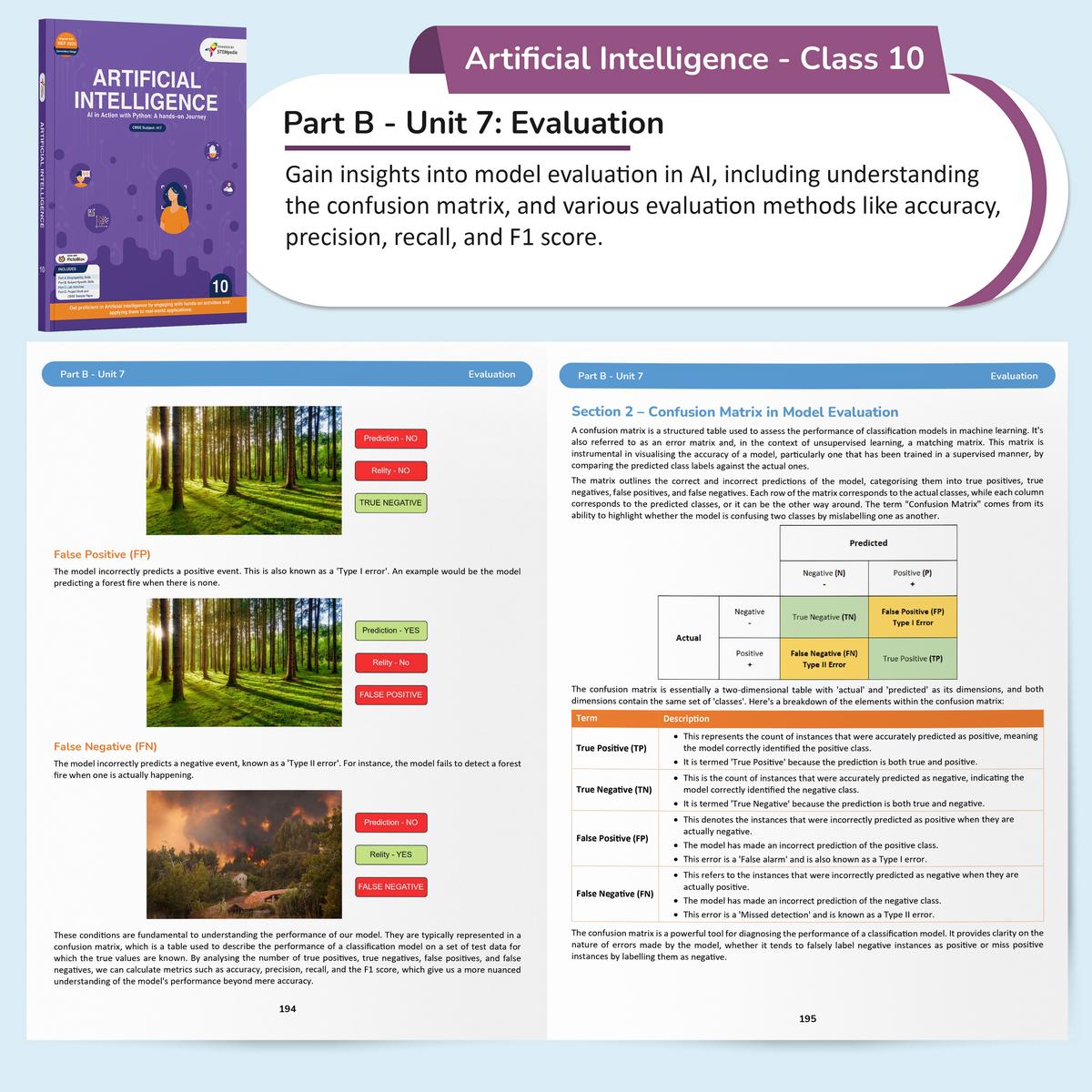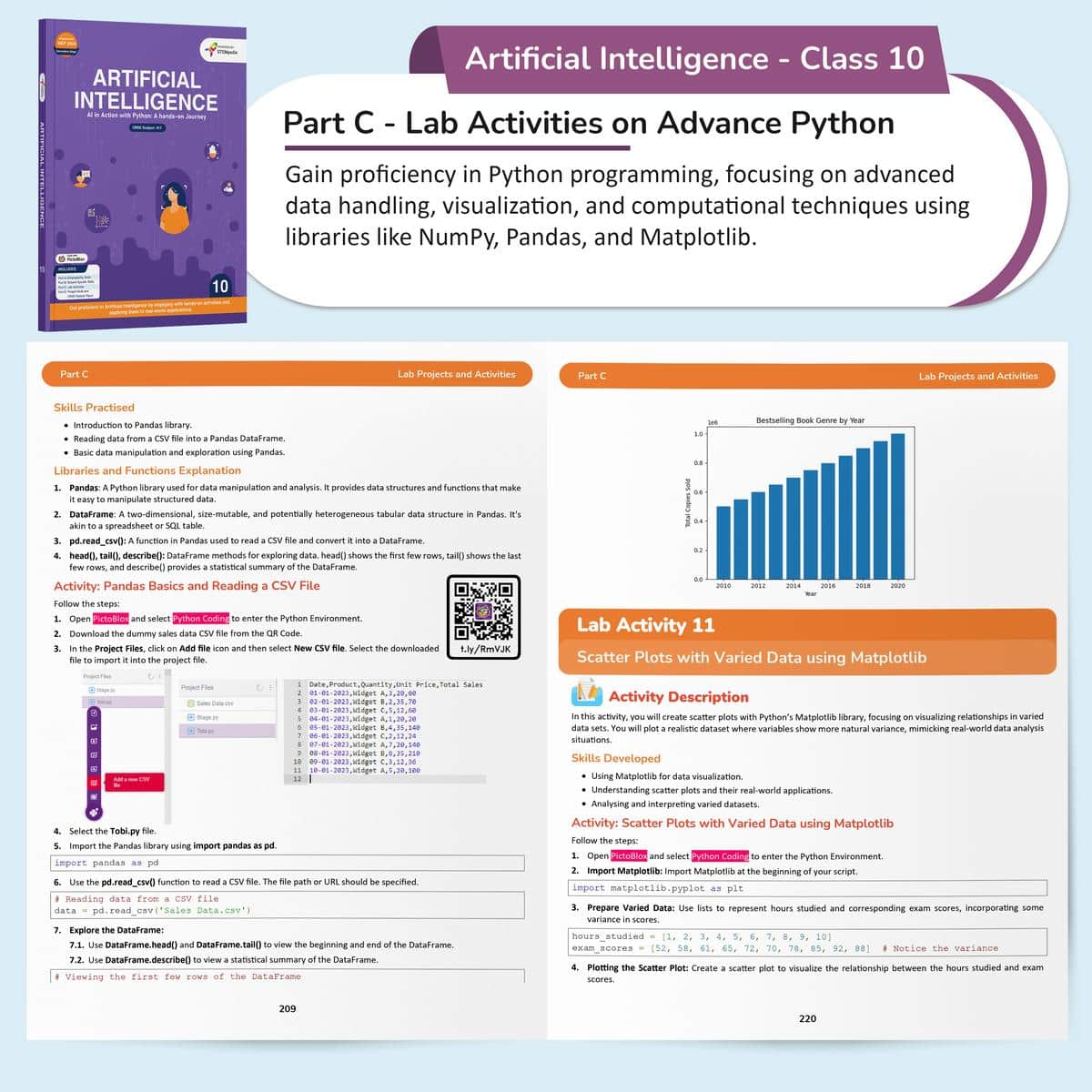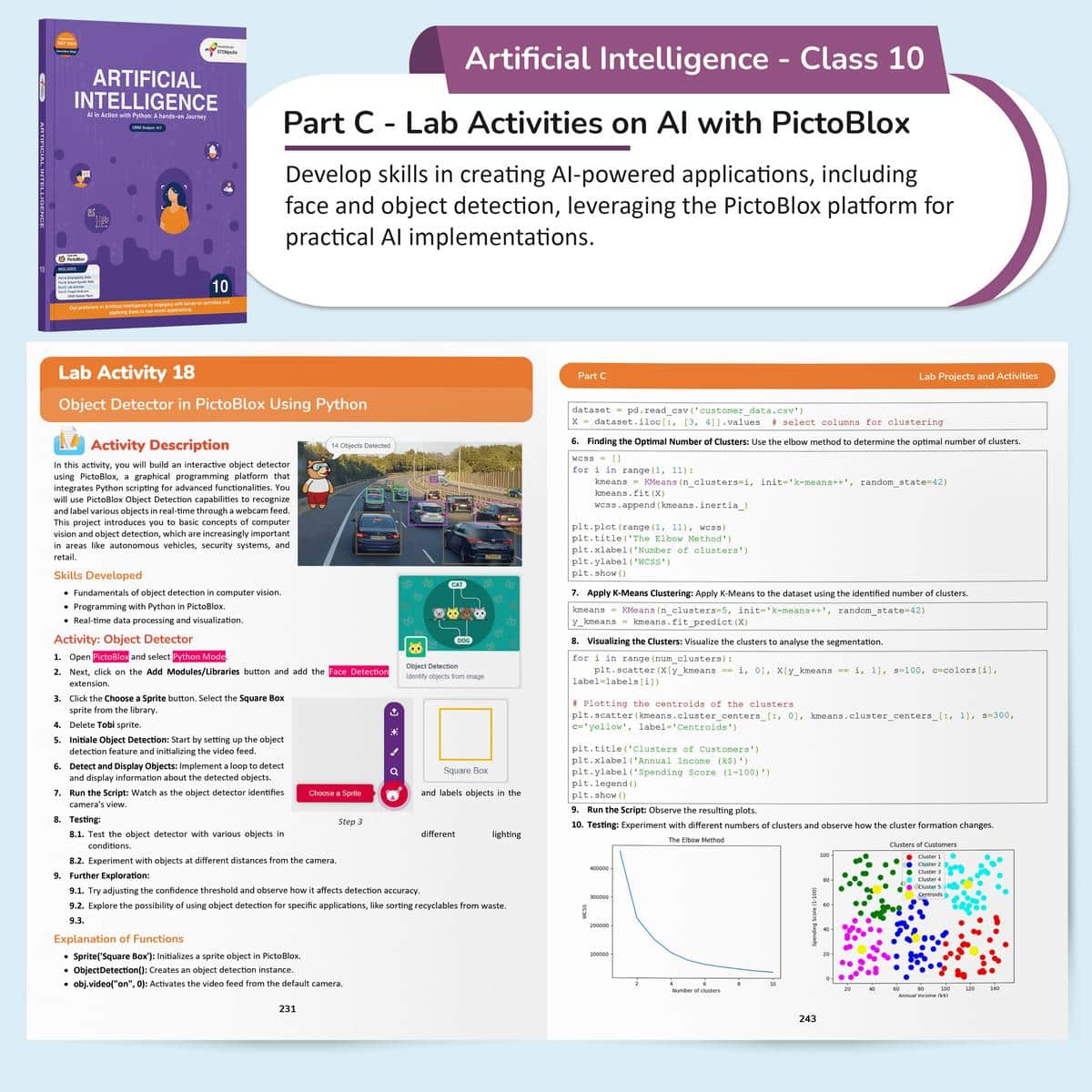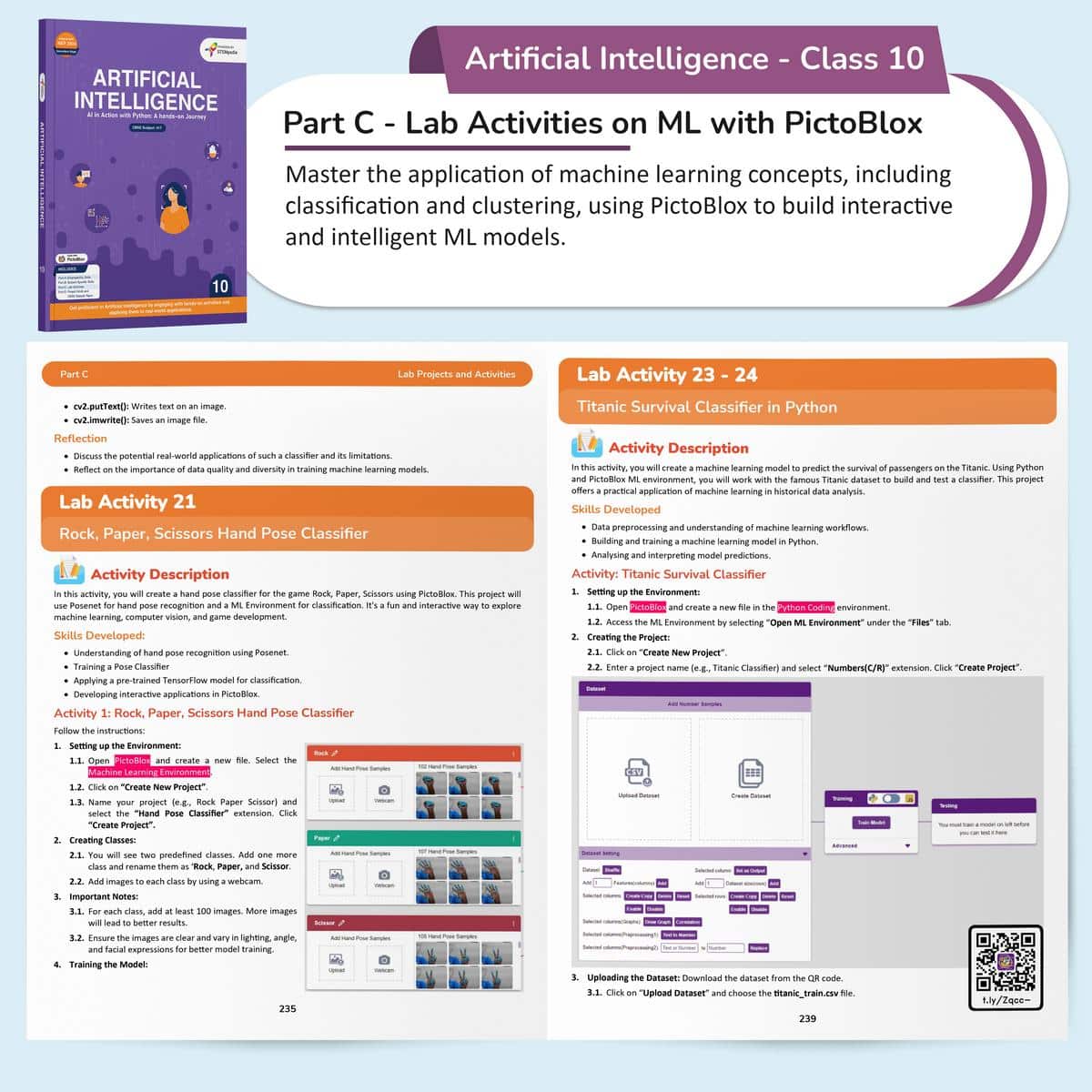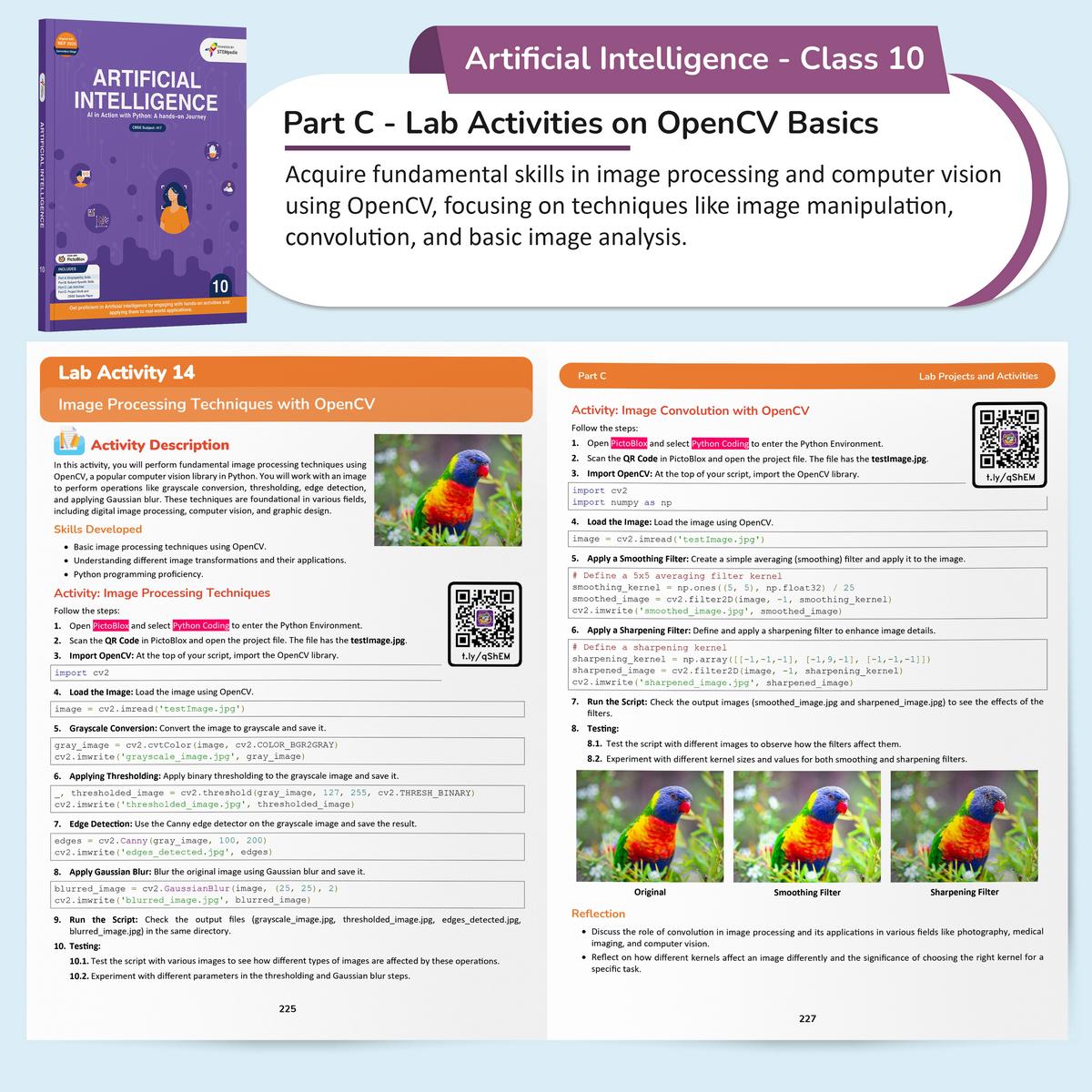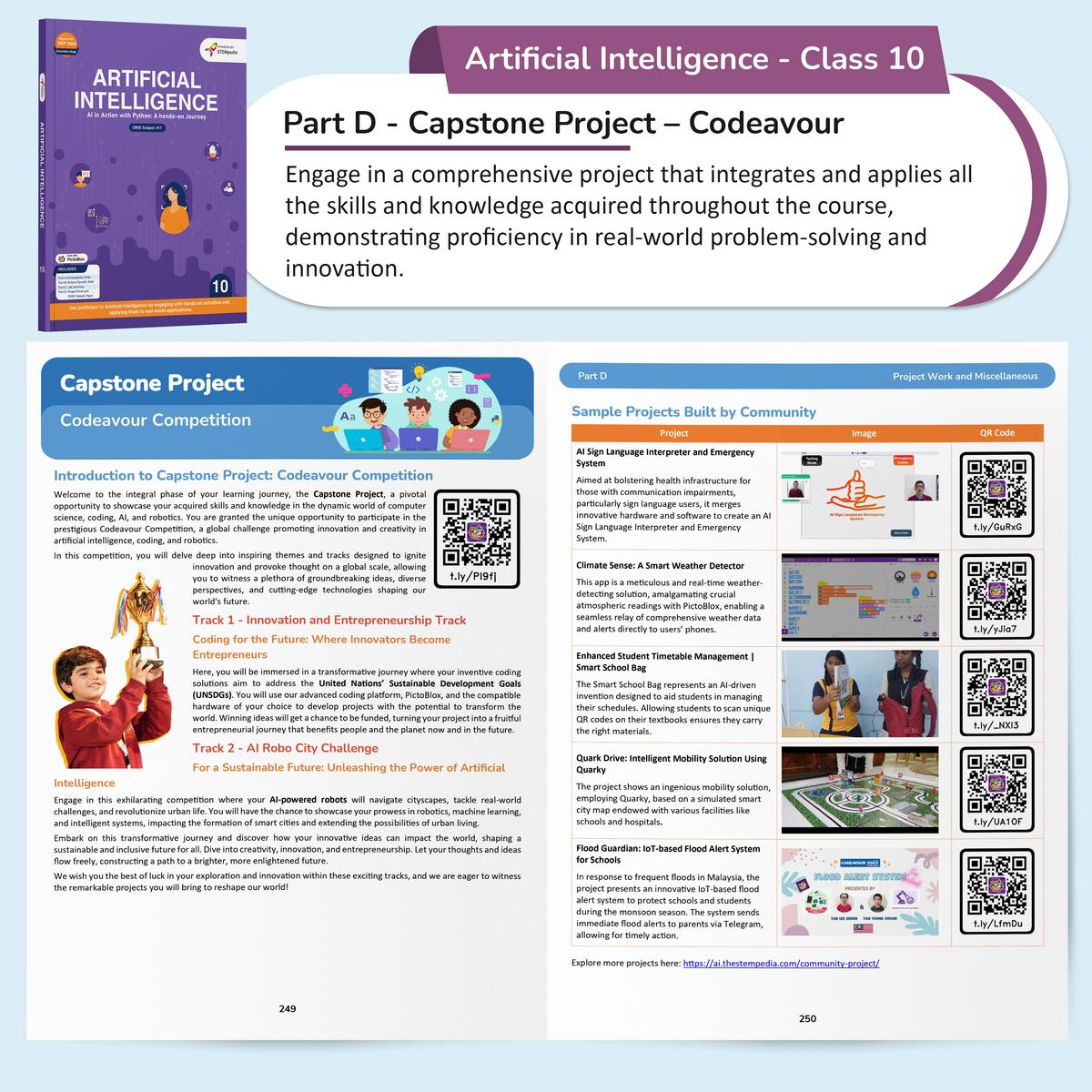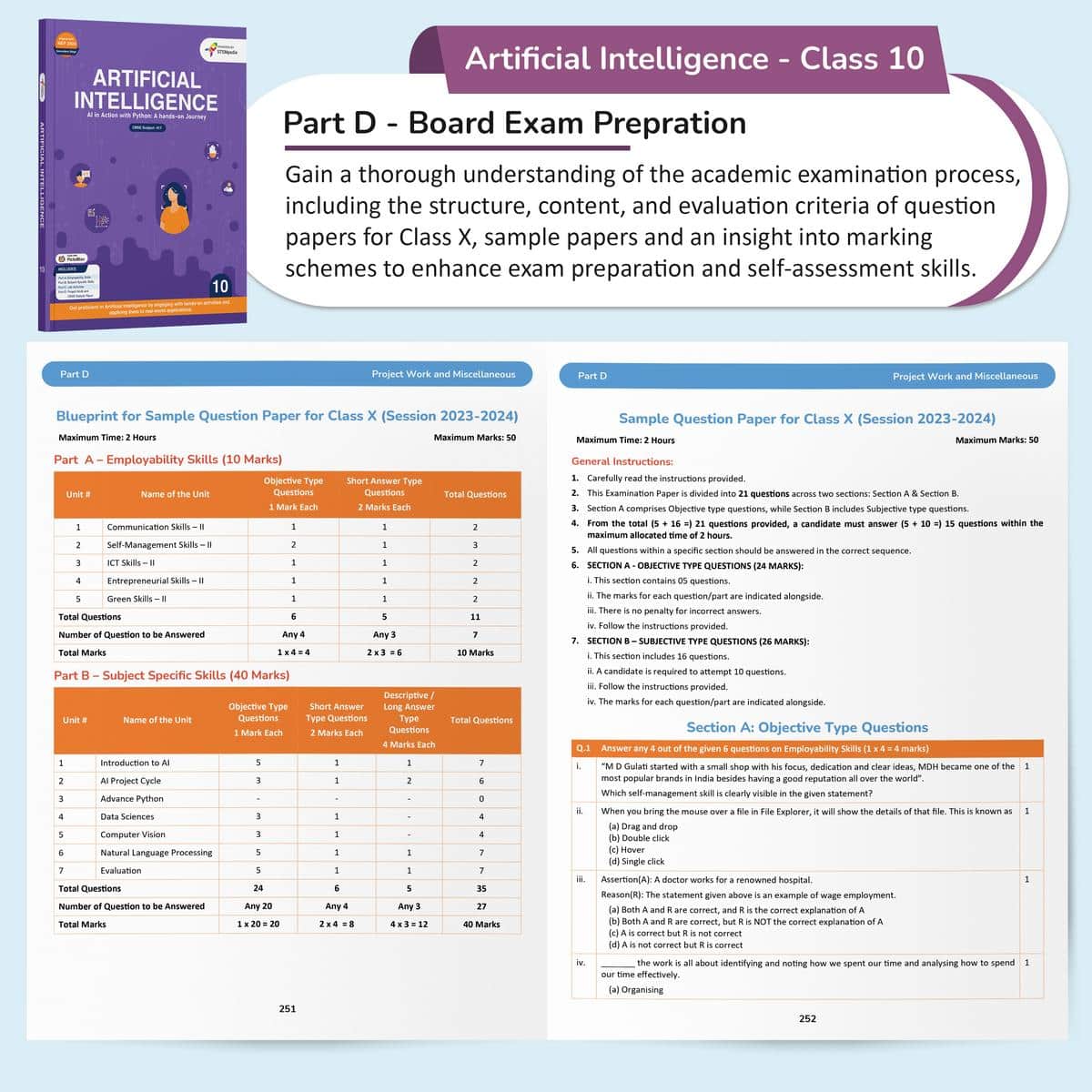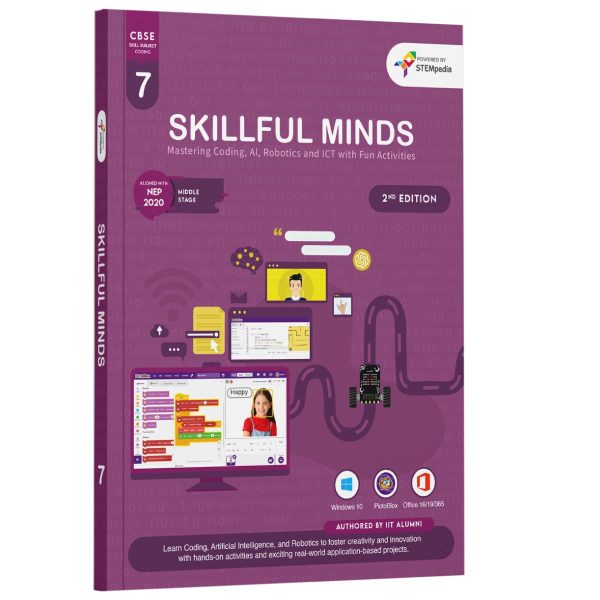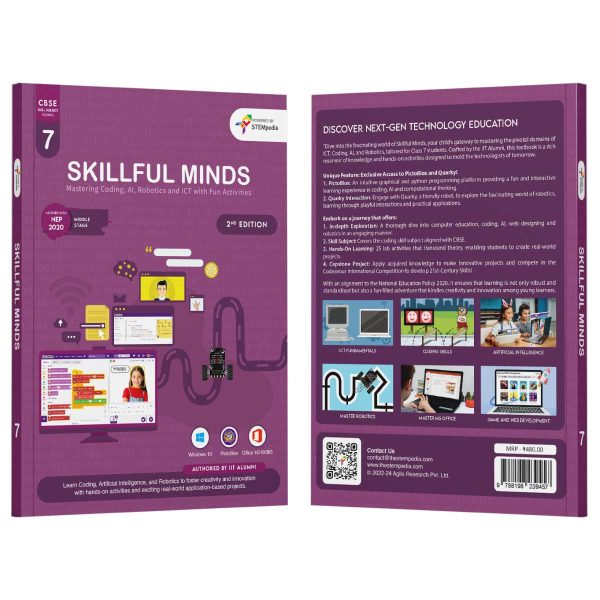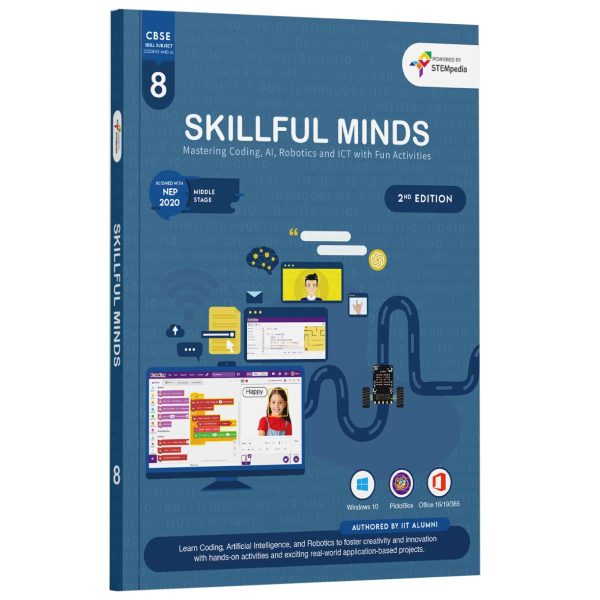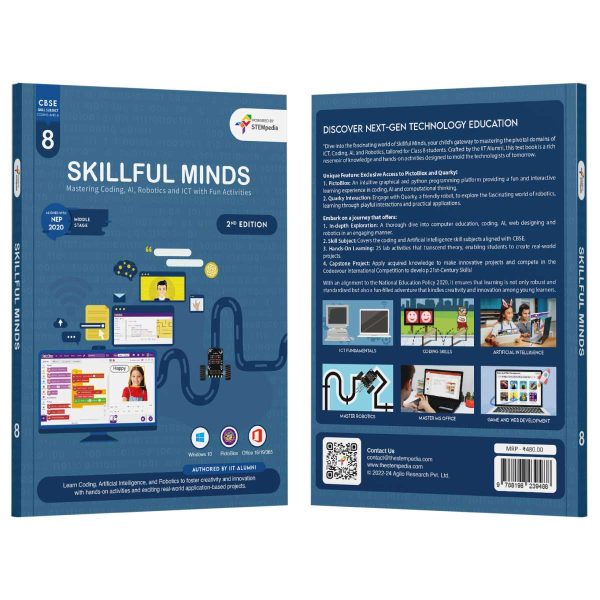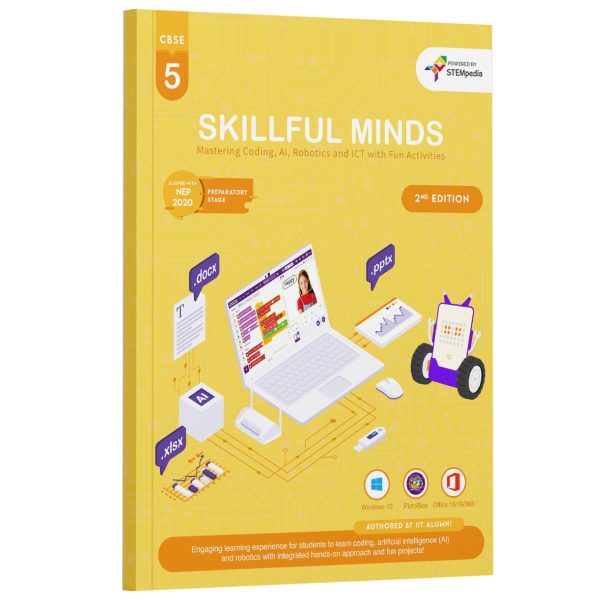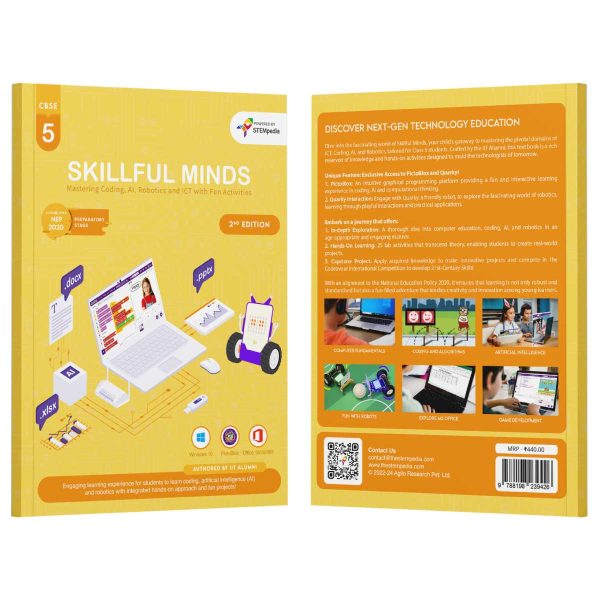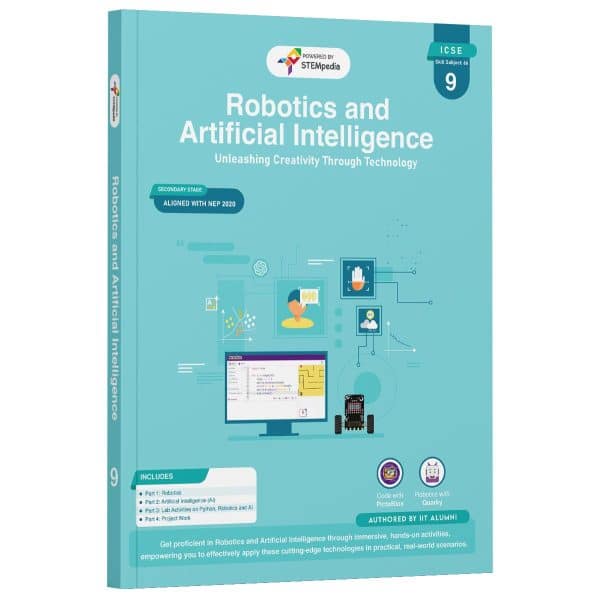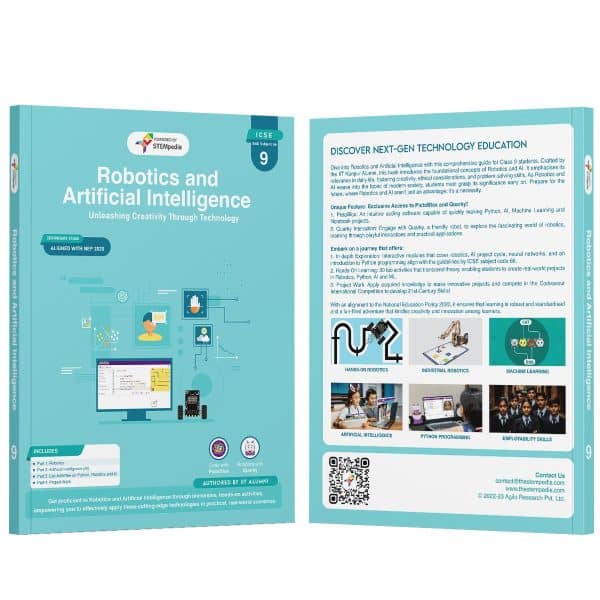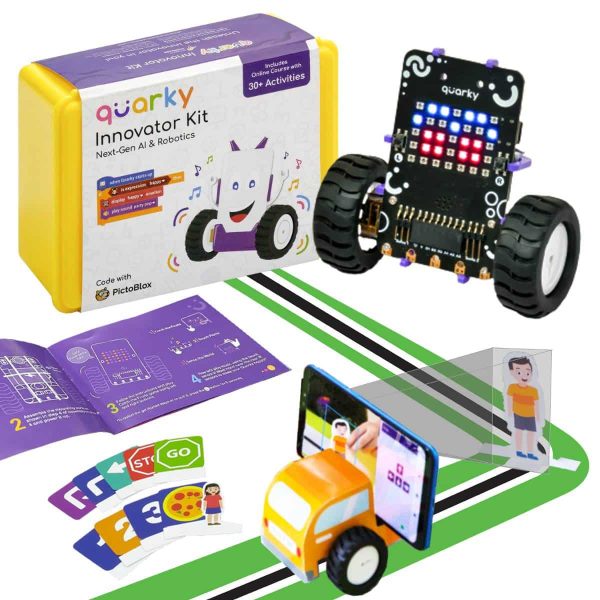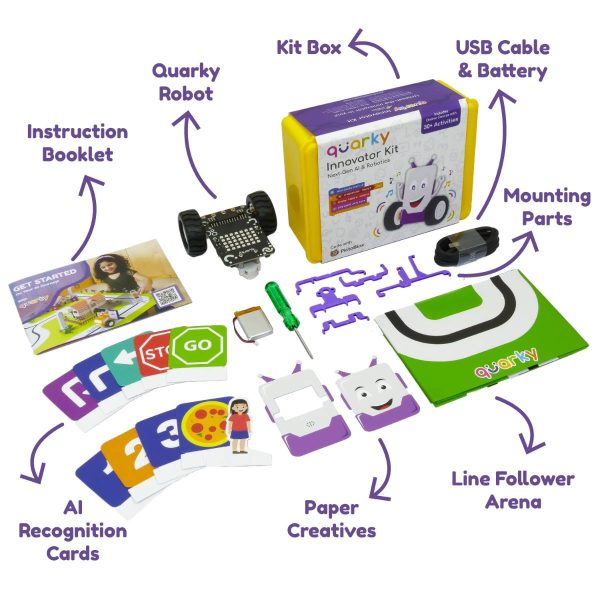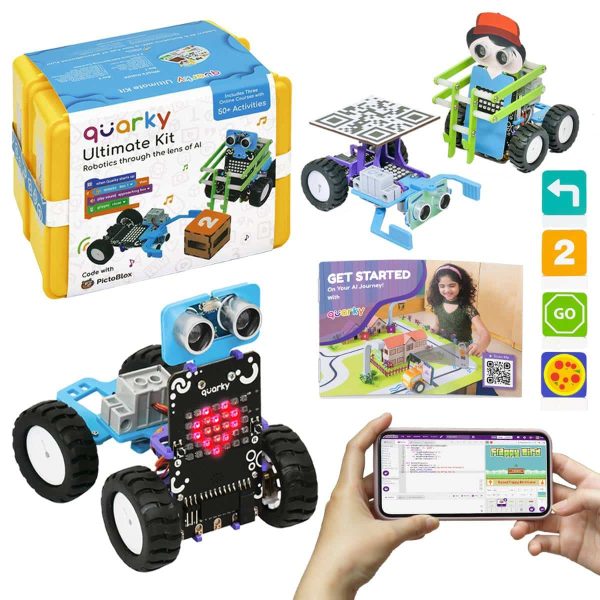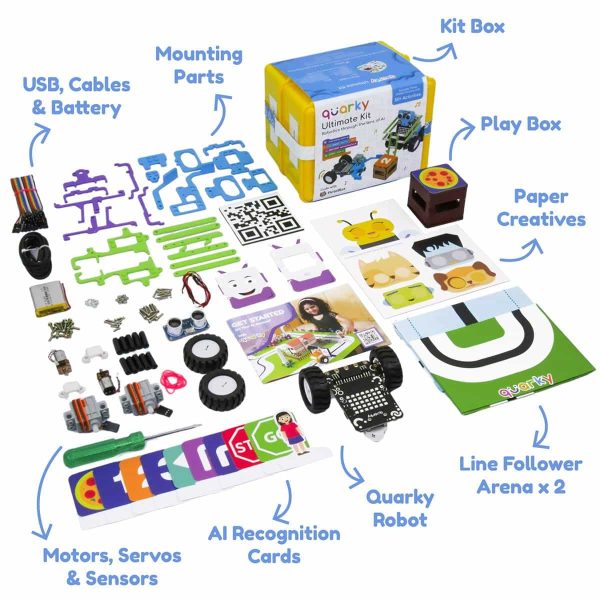Empowering Kids with the Right Future Skills
The core aim of this curriculum for Class 10 is to deepen students’ understanding and appreciation of AI’s role in daily life. It prepares them academically and for future tech careers, blending theoretical knowledge with practical skills in Python programming and AI project development.
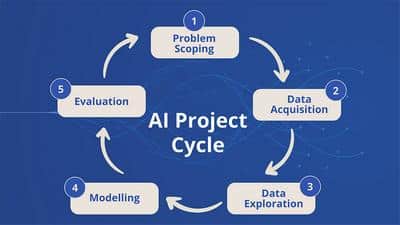
AI Project Cycle

Data Science
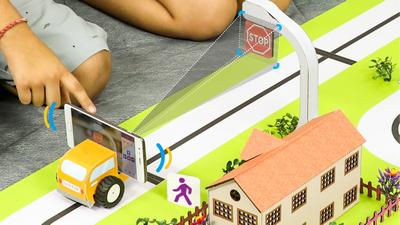
Computer Vision

AI Project Cycle

Data Science

Computer Vision

Machine Learning

Python Programming

Employbility Skills

Machine Learning

Python Programming

Employbility Skills
Inside the Book
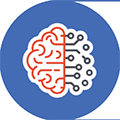
Employability Skills
Emphasizing holistic development, the curriculum covers essential employability skills such as communication, self-management, and ICT skills.
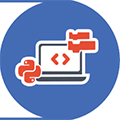
CBSE Aligned Skill Subjects
Aligned with CBSE AI subject (Code 417), assisting students in excelling in their exams and build tech competency.
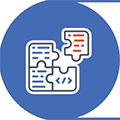
Activity-Based Learning
Incorporating 30 hands-on activities and theme-based learning that make learning both fun and intellectually stimulating.

Innovative Curriculum Design
Tailored specifically for Class 10 students, the curriculum integrates advanced AI concepts with advance Python programming, offering a cutting-edge learning experience.

PictoBlox AI Software
Learn the art of coding through Python coding in PictoBlox, a premier tool for young learners. Students also receive 5000 AI credits for PictoBlox.

Codeavour Competition
Exclusive access to Codeavour – the AI and Robotics Competition, with the opportunity to represent India on the global stage at Dubai.
Software and Hardware Used

Windows 10

PictoBlox Python Coding

PictoBlox AI

PictoBlox Machine Learning
Part A - Employbility Skills
This section covers the essential workplace skills, covering communication, self-management, basic IT skills, entrepreneurship, and sustainability-focused green skills.
| Unit | Name | Number of Sections | Description |
|---|---|---|---|
| 1 | Communication Skills | 7 | Focuses on developing effective communication capabilities, covering various methods, verbal and non-verbal communication, the communication cycle, barriers to effective communication, and fundamental writing skills. |
| 2 | Self-Management Skills | 5 | Addresses personal development skills, including stress management, self-awareness, self-motivation, goal setting, and time management, essential for personal and professional growth. |
| 3 | Information and Communication Technology Skills | 4 | Covers the basics of computer operations, file management, computer care, and maintenance, as well as crucial aspects of computer security and privacy. |
| 4 | Entrepreneurship Skills | 4 | Explores entrepreneurship, examining its societal impact, the qualities of successful entrepreneurs, debunking myths about entrepreneurship, and considering entrepreneurship as a career path. |
| 5 | Green Skills | 2 | Focuses on sustainable development, highlighting its importance and exploring individual roles and responsibilities in fostering sustainable practices. |
Part B: Subject Specific Skills
This part explores advanced topics in Artificial Intelligence, including its fundamentals, ethics, and applications, along with AI project cycles. It also covers advanced Python programming, data science, computer vision, and natural language processing, offering a thorough understanding of these advanced fields.
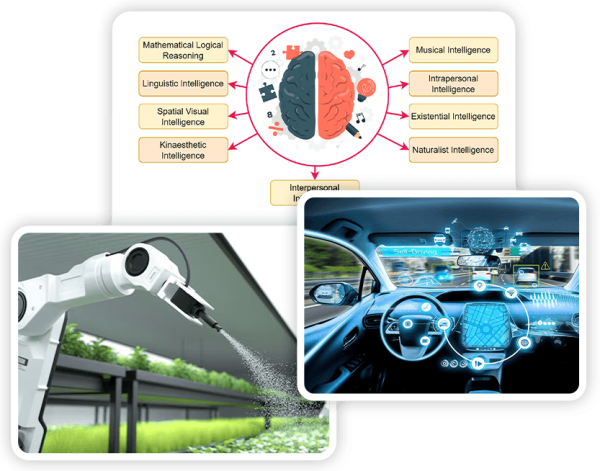
Unit 1: Introduction to Artificial Intelligence
- Section 1: Explores AI’s evolution alongside smartphones, different types of intelligence, decision-making, applications, and distinctions from other technologies.
- Section 2: Introduces the basics of AI, including the KWLH framework, and foundational concepts of machine learning and deep learning.
- Section 3: Provides an overview of AI domains such as data science, computer vision, and natural language processing.
- Section 4: Discusses ethical considerations in AI, focusing on moral dilemmas, data privacy, biases in AI, and accessibility.
Unit 2: AI Project Cycle
- Section 1: Focuses on defining problems within AI projects, incorporating sustainable development goals and the 4Ws problem canvas.
- Section 2: Explores data acquisition, including data types, sources, features, and datasets.
- Section 3: Covers data exploration methods, particularly through data visualization charts.
- Section 4: Delves into AI modelling techniques, including different learning approaches and concepts like supervised and unsupervised learning.
- Section 5: Addresses the evaluation phase in AI projects.
- Section 6: Provides an insight into neural networks, explaining their structure and function in AI.
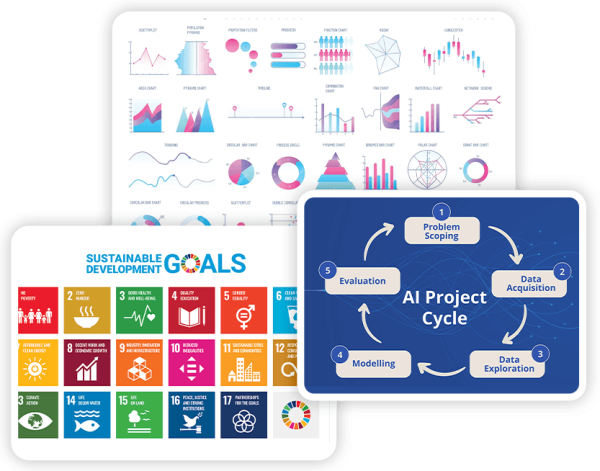
Unit 3: Advanced Python
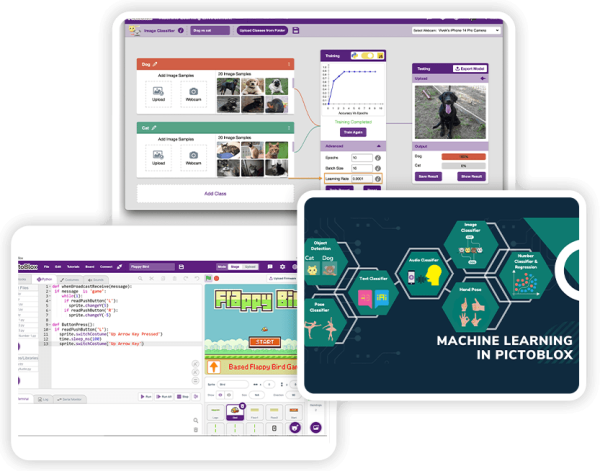
- Section 1: Introduces Jupyter Notebook basics and its application in PictoBlox.
- Section 2: Explains setting up virtual environments with Anaconda Navigator.
- Section 3: Describes the PictoBlox Python interface for coding.
- Section 4: Offers a comprehensive introduction to Python, including basic syntax and programming concepts.
- Section 5: Discusses Python packages, their installation, and key libraries like NumPy, OpenCV, Matplotlib, NLTK, and Pandas.
- Section 6: Focuses on the PictoBlox machine learning environment and its features like image and audio classification.
Unit 4: Data Sciences
- Section 1: Provides an introduction to the field of data science.
- Section 2: Examines the practical applications of data science.
- Section 3: Discusses the role of data science within the AI project cycle.
- Section 4: Covers data collection, analysis, sources, and formats in data science.
- Section 5: Explores data access in Python using tools like NumPy, Pandas, and Matplotlib.
- Section 6: Focuses on data visualization techniques using Matplotlib.
- Section 7: Introduces lists and tuples in Python, including their creation, manipulation, and use.
- Section 8: Describes the K-Nearest Neighbour algorithm in the context of data science.
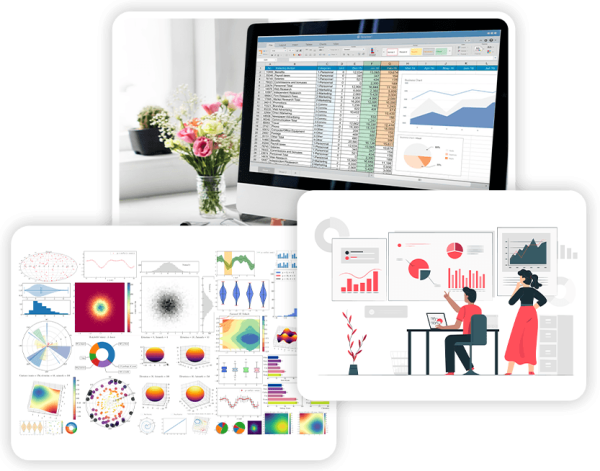
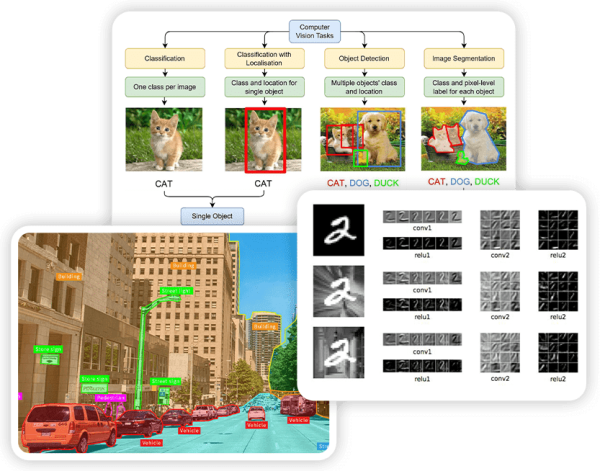
Unit 5: Computer Vision
- Section 1: Discusses the applications of computer vision technology.
- Section 2: Provides an introduction to the field of computer vision and its tasks.
- Section 3: Explores the basics of images, including pixel fundamentals and image features.
- Section 4: Introduces OpenCV for image processing, including techniques like resizing and cropping.
- Section 5: Explains convolution in image processing and provides coding examples.
- Section 6: Delves into convolutional neural networks, their components, and functionality.
Unit 6: Natural Language Processing
- Section 1: Explores the applications of natural language processing (NLP).
- Section 2: Provides an introduction to NLP and its integration in the AI project cycle.
- Section 3: Discusses the development and types of chatbots.
- Section 4: Compares human and computer languages in the context of NLP.
- Section 5: Covers data processing techniques in NLP, including tokenization, stemming, and POS tagging.
- Section 6: Introduces the Natural Language Toolkit (NLTK) and its usage in Python.
- Section 7: Describes large language models (LLMs), their use cases, advantages, and challenges.
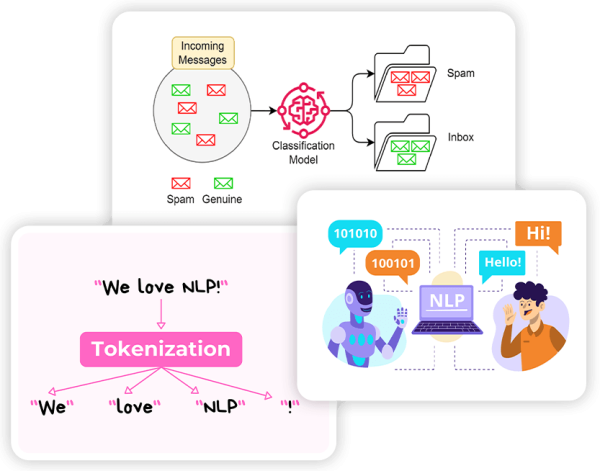
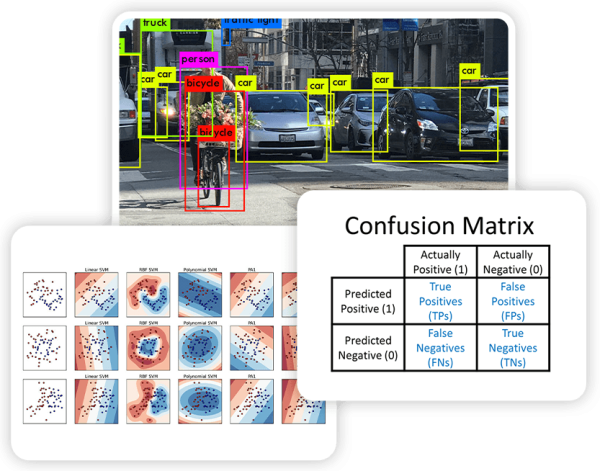
Unit 7: Evaluation
- Section 1: Introduces the key concepts of model evaluation in AI.
- Section 2: Explains the role of confusion matrices in model evaluation.
- Section 3: Discusses various evaluation methods like accuracy, precision, recall, and F1 score.
Part C - Practical Work
This part features practical lab activities that enhance understanding in Python, AI, and Machine Learning. The activities span from basic Python operations to more advanced AI and ML applications, covering topics like data manipulation with Pandas, image processing using OpenCV, and experimentation with diverse AI models.
| Lab Activity | Name | Category | Activity Description |
|---|---|---|---|
| 1 | Calculator Application Using Python Functions | Advanced Python | Create a simple calculator using Python functions for basic arithmetic operations, enhancing interactive programming skills. |
| 2 | Weather Clothing Advisor Using Python Conditions | Advanced Python | Develop a Python-based clothing advisor that suggests outfits based on temperature using conditional statements. |
| 3 | Sorting a Class Roster in Python | Advanced Python | Learn list manipulation and sorting functions in Python by organizing a class roster alphabetically. |
| 4 | Exploring NumPy | Advanced Python | Utilize NumPy to analyse nutritional data, learning array manipulation and basic statistical operations. |
| 5 | Pandas Basics and Reading a CSV File | Advanced Python | Introduce Pandas for data manipulation, focusing on reading and basic operations on CSV file data. |
| 6 | Reading JSON Data into a Pandas DataFrame | Advanced Python | Learn to read and analyse JSON data using Pandas, a key skill in data manipulation. |
| 7 | Basic Pandas Operations | Advanced Python | Practice fundamental Pandas operations like column selection, row slicing, and data filtering. |
| 8 | Plotting X and Y Point Arrays using Matplotlib | Advanced Python | Discover basic data visualization by plotting X and Y points with Matplotlib. |
| 9 | Plotting with Matplotlib | Advanced Python | Enhance Matplotlib skills by using different markers, line styles, and labelling axes for informative plotting. |
| 10 | Plotting Bar Graphs with Bestselling Book Data | Advanced Python | Learn bar graph plotting in Python with Matplotlib using bestselling book data for year-wise genre analysis. |
| 11 | Scatter Plots with Varied Data using Matplotlib | Advanced Python | Create scatter plots to visualize relationships in varied data sets, mimicking real-world data analysis. |
| 12 | Regression - Predicting Future Temperatures | Advanced Python | Perform linear regression to predict future temperatures and understand data trends. |
| 13 | Image Manipulation with OpenCV | OpenCV Basics | Engage in basic image manipulation like resizing and cropping using the OpenCV library. |
| 14 | Image Processing Techniques with OpenCV | OpenCV Basics | Apply fundamental image processing techniques with OpenCV, including grayscale conversion and edge detection. |
| 15 | Exploring Image Convolution with OpenCV | OpenCV Basics | Learn image convolution using OpenCV, applying different filters for image enhancement or noise reduction. |
| 16 | Convolution on a Random Array with OpenCV | OpenCV Basics | Perform convolution on a random array using OpenCV and NumPy to understand the basics of this image processing technique. |
| 17 | Face Emotion Detector | AI with PictoBlox | Create a face emotion detector using PictoBlox, introducing computer vision and AI concepts in emotion recognition. |
| 18 | Object Detector in PictoBlox Using Python | AI with PictoBlox | Build a real-time object detector using PictoBlox, integrating Python scripting for object recognition. |
| 19 & 20 | Fruit Classifier in PictoBlox Using Python | ML with PictoBlox | Develop a fruit classifier system in Python with a pre-trained model, simulating digital diet monitoring or automated sorting. |
| 21 | Rock, Paper, Scissors Hand Pose Classifier | ML with PictoBlox | Create a hand pose classifier for Rock, Paper, Scissors using PictoBlox and Posenet, exploring ML and game development. |
| 22 | Yoga Pose Detector with Pose Classifier | ML with PictoBlox | Develop a Yoga Pose Detection system using Human Pose Classifier in a Machine Learning environment to classify different yoga poses. |
| 23 & 24 | Titanic Survival Classifier in Python | ML with PictoBlox | Build a machine learning model to predict Titanic passenger survival using Python and PictoBlox. |
| 25 & 26 | Implementing K-Means Clustering in Python | Advanced Python | Learn to implement K-Means clustering in Python, applying it to customer data for market segmentation. |
| 27 & 28 | Exploring the NLTK Package in Python | Advanced Python | Explore the NLTK library for natural language processing tasks like tokenization and text analysis. |
| 29 & 30 | Creating and Plotting a Confusion Matrix in Python | Advanced Python | Create and plot a confusion matrix in Python to evaluate classification models, calculating key performance metrics. |
Part D - Project Work / Field Visit / Student Portfolio
The last section of the book focuses on project work and supplementary materials. It encompasses a capstone project, examples of projects, blueprints, and sample exam question papers, complete with marking schemes and answers. This provides students with a comprehensive educational toolkit.
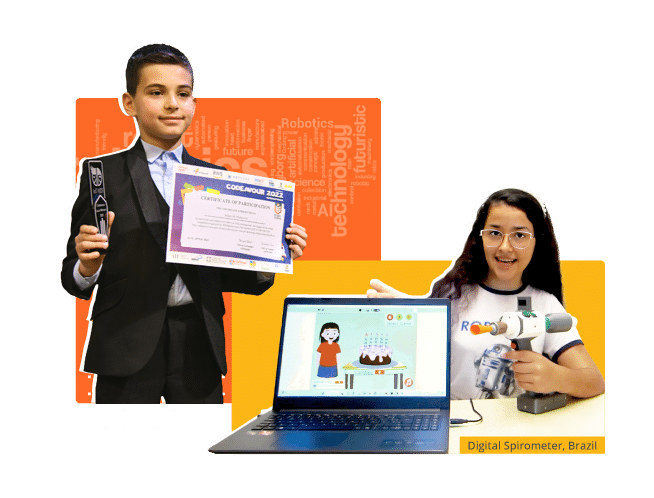
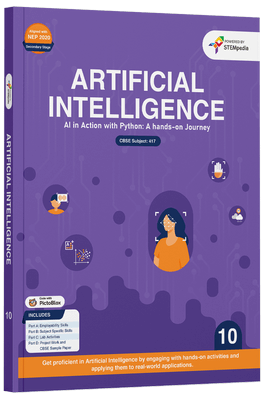
Get Your Book Today!
Artificial Intelligence is the book your child needs to start their journey in technology. Equip them with the skills of tomorrow, today!
FAQs on Artificial Intelligence - Class 10 Book
This book aims to provide Class 10 students with a thorough understanding of Artificial Intelligence and Machine Learning. It is tailored to instil a deep appreciation of AI’s significance in modern life, blending theoretical knowledge with hands-on activities. The curriculum covers Python programming and AI project development, preparing students for both academic excellence and future technological careers.
“Artificial Intelligence (Code 417)” is meticulously designed to align with the CBSE Skill Subject 417 for Class 10, ensuring it comprehensively covers the essential elements of the curriculum. The alignment is reflected in various aspects of the book:
- Curriculum Coverage: The book thoroughly covers all the key topics outlined in the CBSE Class 10 AI curriculum. It includes fundamental and advanced concepts in AI, machine learning, Python programming, data science, computer vision, and natural language processing.
- Educational Objectives: The book’s objectives are in sync with those set by the CBSE. It aims to equip learners with a profound understanding of AI and its practical applications, preparing them not only for academic examinations but also for future technological challenges.
- Practical and Theoretical Integration: Echoing CBSE’s focus on a well-rounded educational approach, the book integrates theoretical knowledge with practical applications. It comprises extensive lab activities, project work, and exercises that mirror the practical emphasis CBSE advocates for skill-based subjects.
- Skill Development Emphasis: In line with the CBSE’s skill-oriented educational framework, the book underscores the development of employability skills alongside subject-specific knowledge. This includes key skills like communication, self-management, ICT skills, entrepreneurship, and understanding of green practices.
- Assessment Compatibility: The structure of assessments and exercises in the book aligns with the CBSE’s guidelines. This includes a blend of objective questions, short answer type questions, and practical project evaluations.
- Incorporation of AI Ethics: Aligning with CBSE’s recent emphasis on ethics in technology education, the book includes a dedicated section on AI ethics. This ensures students are not only technically proficient but also aware of the ethical implications associated with AI.
- Use of Innovative Educational Tools: The book’s use of PictoBlox for practical learning aligns with CBSE’s emphasis on innovative and interactive methodologies. PictoBlox makes complex AI concepts accessible and engaging for students, enhancing their practical learning experience.
- Real-World Application and Sustainable Development Goals (SDGs): Reflecting CBSE’s focus on real-world applicability and alignment with SDGs, the book includes project work and field visits. This approach encourages students to apply their learning in real-world scenarios, understanding AI’s broader impact on society and the environment.
“Artificial Intelligence (Code 417)” for Class 10 is a comprehensive resource that fully aligns with the CBSE’s Skill Subject 417. It offers a holistic educational experience, covering all necessary academic requirements and equipping students with practical skills and ethical understanding for the evolving world of AI.
The book is co-authored by Pankaj Kumar Verma and Akshat Srivastava. Pankaj Kumar Verma is the Chief Technology Officer at STEMpedia, holding a B.Tech degree from IIT Kanpur. Akshat Srivastava is an AI and Data Science Researcher at STEMpedia, with a B.Tech from Bennett University. Their combined expertise in AI and data science brings a wealth of knowledge and practical insight to the book.
The book is divided into four main parts:
- Part A: Employability Skills – Covers workplace skills such as communication, self-management, IT skills, entrepreneurship, and sustainability.
- Part B: Subject Specific Skills – Delves into AI, including its basics, ethics, applications, and project cycles, along with advanced Python programming and data sciences.
- Part C: Lab Activities – Features practical lab exercises in Python, AI, and ML.
- Part D: Project Work and Miscellaneous – Includes a capstone project, sample projects, and resources like blueprints and sample question papers with answer keys.
PictoBlox is an innovative platform used in the book to simplify AI learning. It’s a Python-based platform that makes complex AI concepts more interactive and accessible through engaging activities like image classification and object detection. This approach enhances practical understanding and makes learning AI enjoyable.
Absolutely. The book is structured to cater to beginners, offering detailed, step-by-step guidance through each concept and activity. It’s designed to be accessible for students with no prior knowledge of AI or programming, ensuring a smooth learning curve.
By providing foundational knowledge in AI and practical skills in Python programming and AI project development, the book equips students for various tech-based careers. It fosters critical thinking, problem-solving, and creativity, which are crucial skills in the rapidly evolving tech industry.
The book includes a variety of lab activities and projects, ranging from basic Python operations to advanced AI and ML applications. These include data handling with Pandas, image processing using OpenCV, and exploring AI models. Additionally, it provides resources for a capstone project, sample projects, and sample question papers to enhance practical and theoretical learning.
As of its first edition in 2023, the book includes contemporary content that reflects the current state of AI. It is designed to engage students with modern technological trends and the latest developments in the field.
Besides AI and programming, the book focuses on developing employability skills such as communication, self-management, ICT, entrepreneurial, and green skills. These skills are critical for students’ overall development and future career readiness.
While the book is designed with classroom instruction in mind, its clear structure and comprehensive content also make it suitable for self-study. Students who are motivated and disciplined can use this book to learn independently.
Its unique combination of theoretical knowledge, practical skills, alignment with the CBSE curriculum, and the use of innovative platforms like PictoBlox makes it an indispensable resource for students and educators in the field of AI.

